Soapstone, also known as steatite or soaprock, is a metamorphic rock composed primarily of talc, chlorite, and other minerals, giving it a soft, soapy texture that inspired its name. Valued since ancient times for its durability and heat retention, soapstone combines aesthetic appeal with practical performance in both laboratory and kitchen settings. In modern homes, soapstone is prized for kitchen countertops thanks to its natural resistance to heat, stains, and acids, owing to its nonporous structure. Available in a range of muted grays, blacks, and greens, each slab of soapstone offers unique veining and subtle variations that develop a rich patina over time. While soft compared to granite or quartz, soapstone’s slight susceptibility to scratches allows homeowners to embrace an aged, weathered beauty that can be easily restored. This comprehensive guide explores the composition, history, benefits, drawbacks, care, design options, and sustainability of soapstone kitchen countertops to help you determine if they are the right choice for your home.
1. What Is Soapstone?
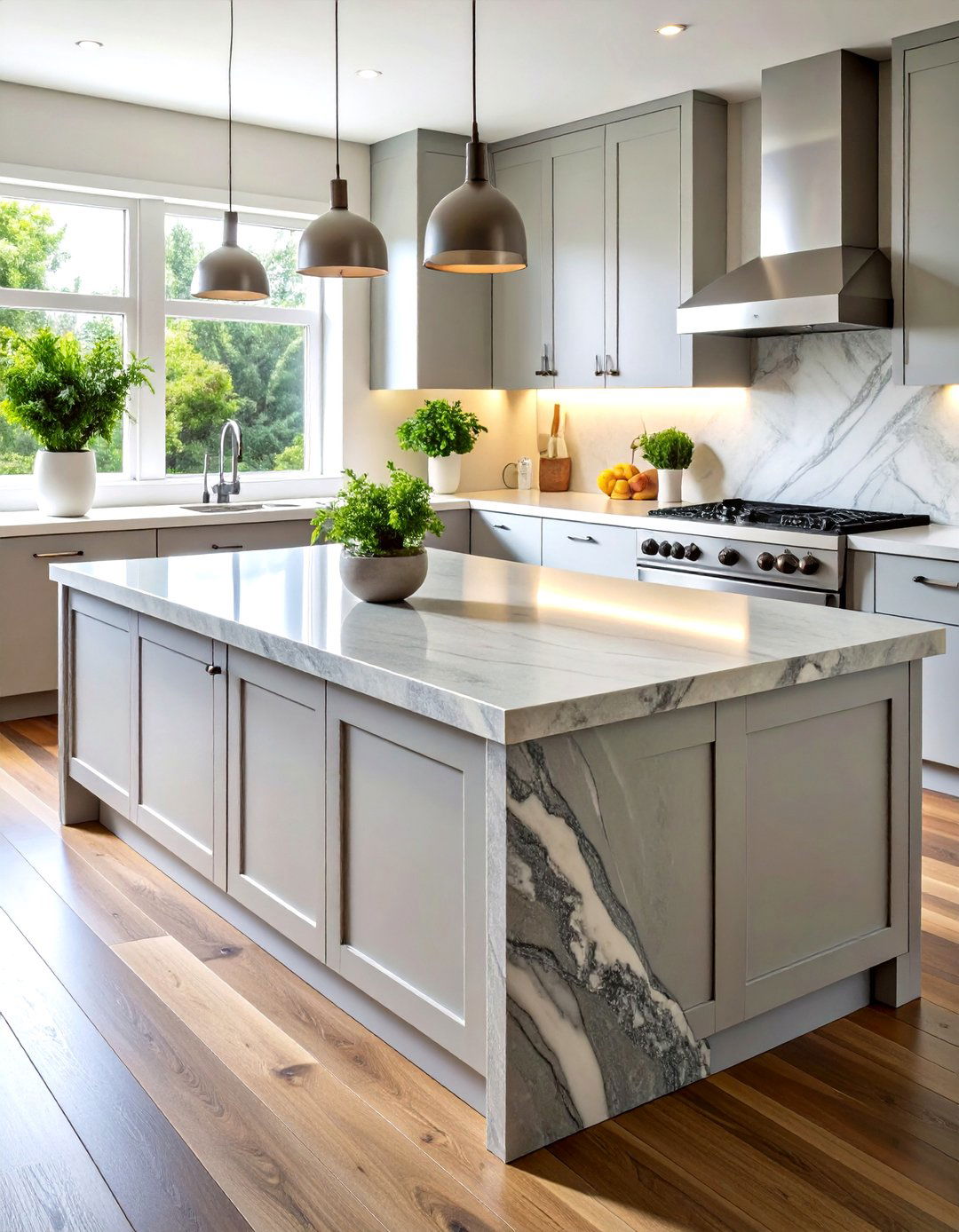
Soapstone is a talc-schist, a type of metamorphic rock composed predominantly of the mineral talc, which can vary from 30% to 80% by weight, affecting its softness and density. This high talc content gives soapstone its characteristic smooth, soapy feel and a Mohs hardness rating between 1 and 5.5, depending on grade. Unlike porous stones such as marble or limestone, soapstone is non-porous and non-absorbent, resisting liquids and acids without sealing. Its composition may also include chlorite, dolomite, magnesite, and quartz, which subtly influence color and grain patterns. Because of its unique properties, soapstone is easy to carve and shape, making it suitable for countertops, sinks, carvings, and heat-resistant laboratory surfaces. Geologically, soapstone forms under heat and pressure during metamorphism of ultramafic protoliths, often found in subduction zones and orogenic belts.
2. Historical Use of Soapstone in Kitchens
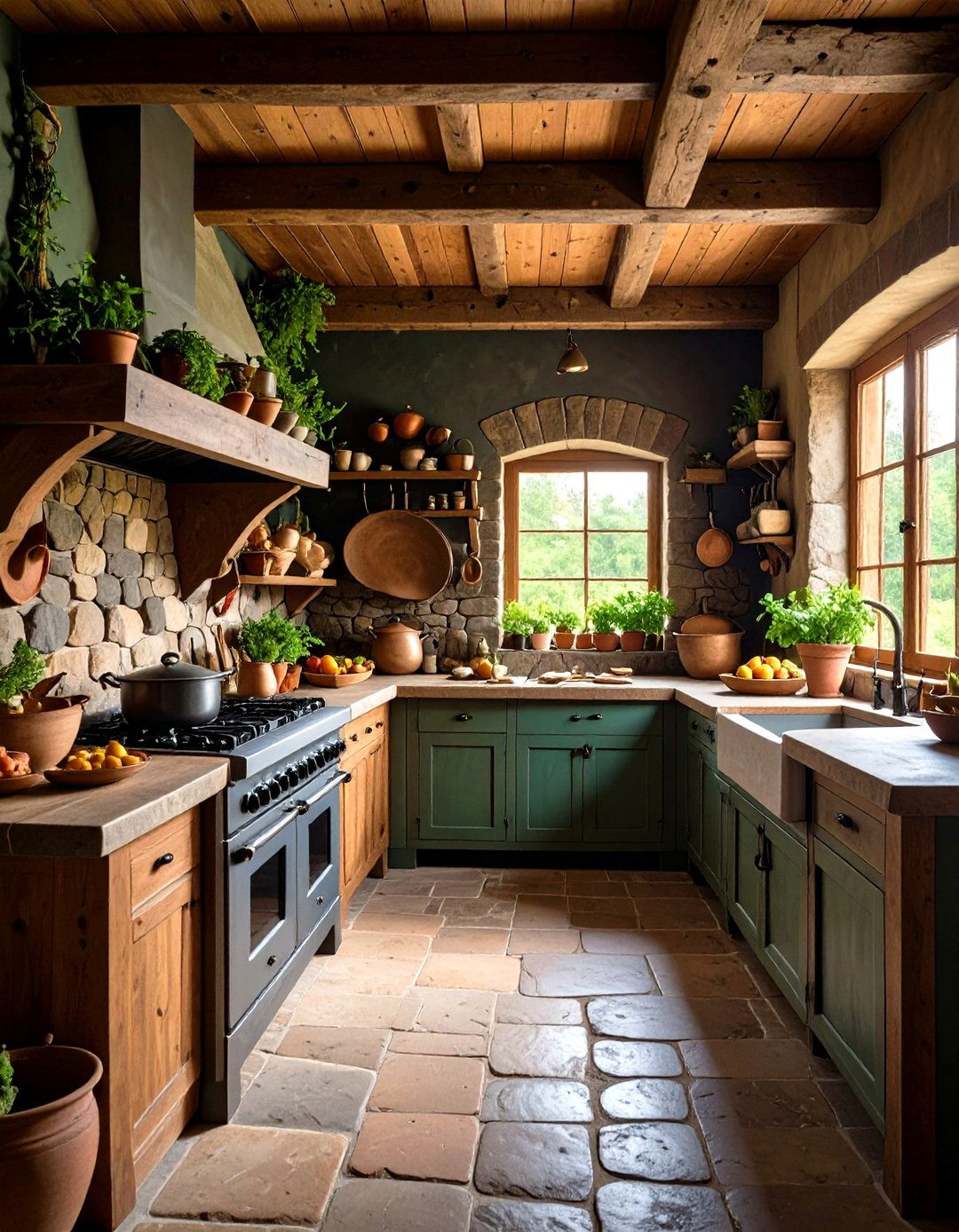
Ancient civilizations across Africa, Europe, and the Americas recognized soapstone’s thermal properties and employed it for cooking vessels, hearth surrounds, and food preparation slabs. Native Americans of the Late Archaic period carved bowls and griddles from soapstone to harness its excellent heat retention and durability for slow, even cooking. In medieval Northern Europe, soapstone was revered for carving religious sculptures and domestic objects, often sourced from quarries in Finland and Norway. By the nineteenth century, soapstone’s chemical inertness and heat resistance made it a preferred material for laboratory countertops and cookware in Western societies. Today, these historic practices inform modern kitchen design, where soapstone countertops blend timeless tradition with contemporary functionality.
3. Unique Characteristics of Soapstone
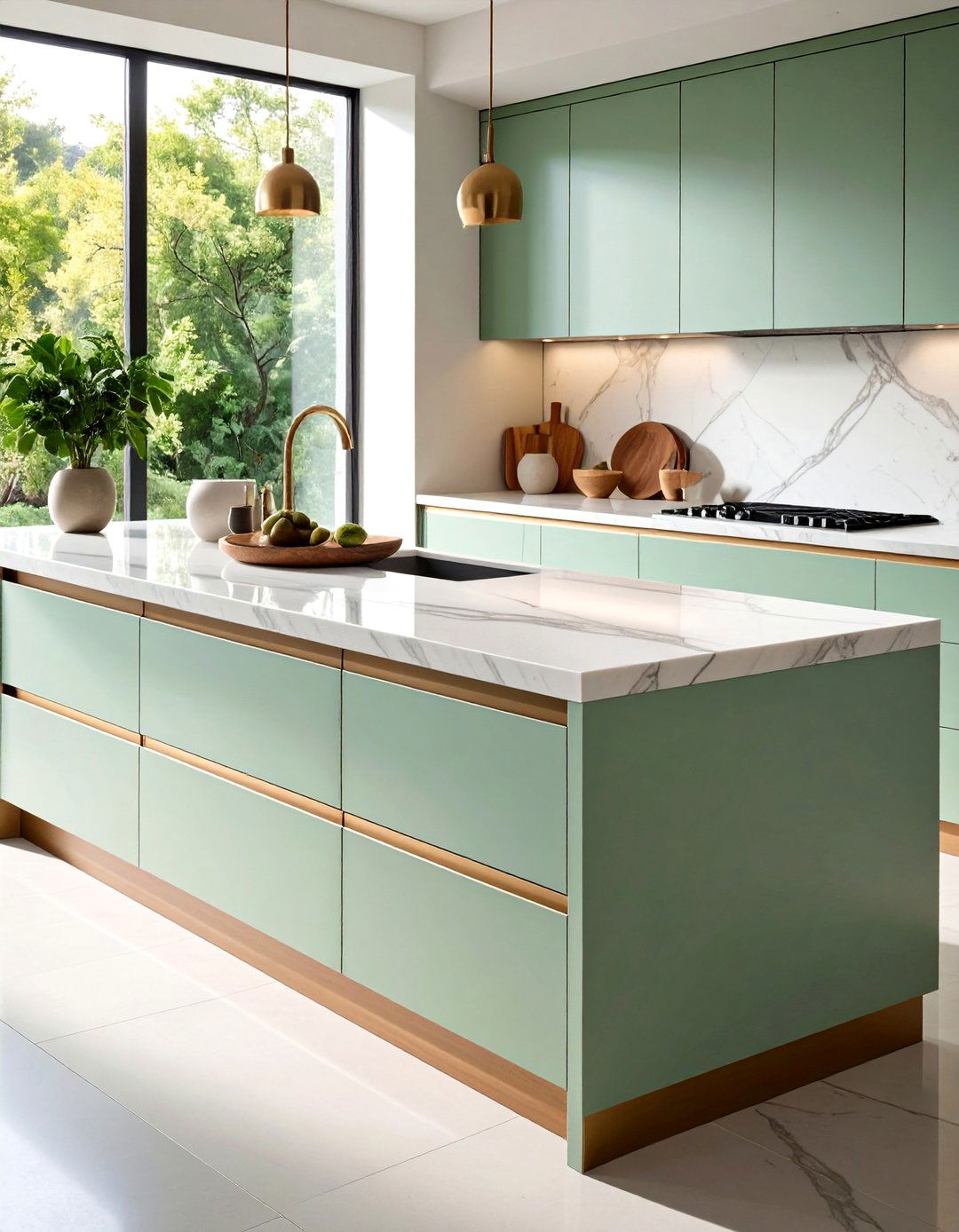
Soapstone’s most distinctive characteristic is its non-porosity, which prevents liquids, oils, and acids from penetrating the surface, making it virtually stain-proof without the need for sealing. It also exhibits exceptional heat resistance, withstanding temperatures up to approximately 450 °F (232 °C) without damage, a feature that traces back to its high specific heat capacity and mineral composition. As a soft stone with a Mohs hardness as low as 1, soapstone can scratch and dent more readily than harder stones, but these blemishes contribute to a lived-in patina that many homeowners find appealing. Additionally, soapstone’s chemical inertness resists acids and bases, allowing for safe contact with cooking ingredients and cleaning products. Its natural thermal mass also helps regulate room temperature, slowly absorbing heat and evenly radiating it back into the environment.
4. Color Variations and Finishes
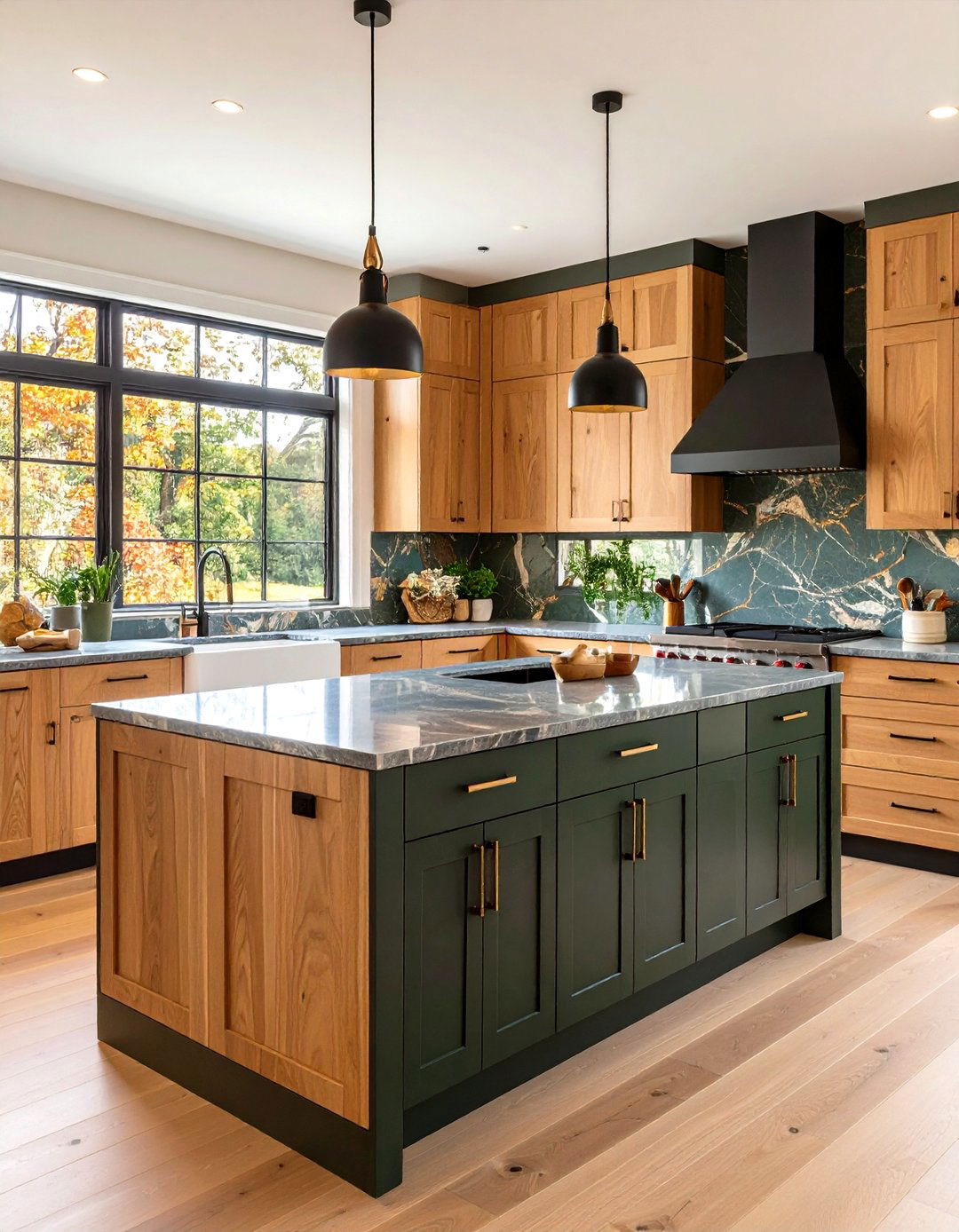
Soapstone naturally occurs in a spectrum of muted hues, from pale gray to deep charcoal and soft green, often with subtle veining or flecks of other minerals. Specific varieties, such as Ipanema Reserve™ and Anastacia Soapstone, may feature hints of green or bluish undertones that darken over time. Finishes for soapstone countertops typically range from honed (matte) to polished (slightly lustrous), each accentuating the stone’s unique grain and patina differently. A honed finish offers a classic, understated look and better conceals scratches and wear, while a polished finish highlights color contrast and veining. Homeowners can further customize appearance through periodic oiling, which temporarily deepens color and enhances luster.
5. Advantages of Installing Soapstone Countertops

One of soapstone’s greatest benefits is its resistance to heat, making it safe to place hot pots and pans directly on the surface without risk of scorching or cracking. Its non-porous nature also renders it impervious to stains from wine, coffee, and acidic foods, eliminating the need for frequent sealing. Over time, minor scratches and dents develop into a rich patina, adding character and an antique farmhouse aesthetic that complements both traditional and modern kitchens. Chemically inert and resistant to mold and bacteria, soapstone is hygienic and easy to clean with mild soap and water. Additionally, its thermal mass properties help moderate kitchen temperatures by absorbing ambient heat and releasing it slowly.
6. Potential Drawbacks and Considerations
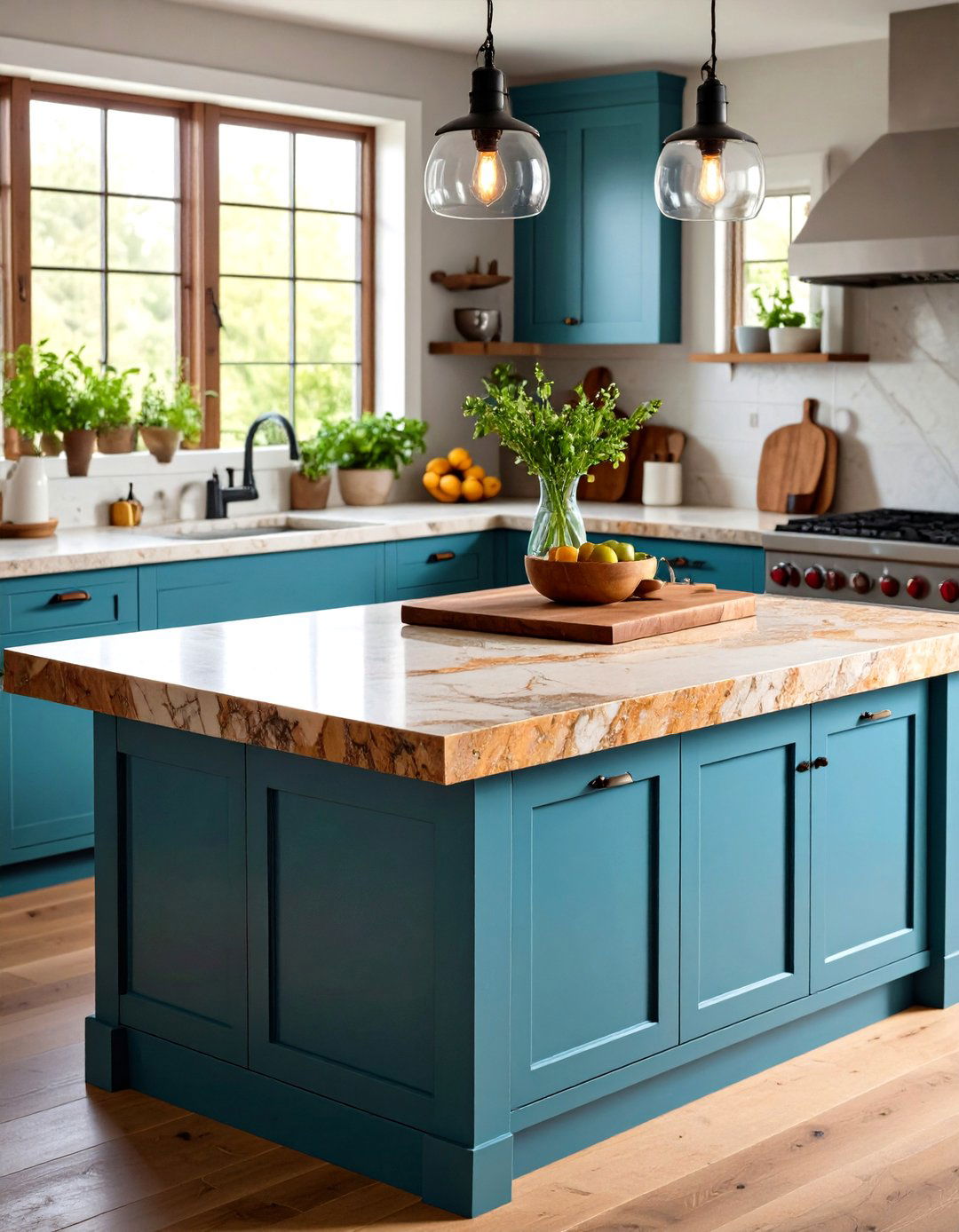
Despite its many benefits, soapstone’s softness means it can scratch, chip, or dent more easily than harder stones like granite or quartz. While some homeowners embrace these imperfections as part of the stone’s evolving patina, others may view frequent scratching as a drawback. Color options for soapstone are also limited compared to engineered materials, with most slabs appearing in shades of gray, black, or green. Installation and fabrication costs can be higher due to the stone’s weight and the specialized handling required to prevent damage during cutting and transport. Finally, homeowners should source soapstone from reputable quarries to ensure consistent quality and ethical mining practices.
7. Durability and Heat Resistance
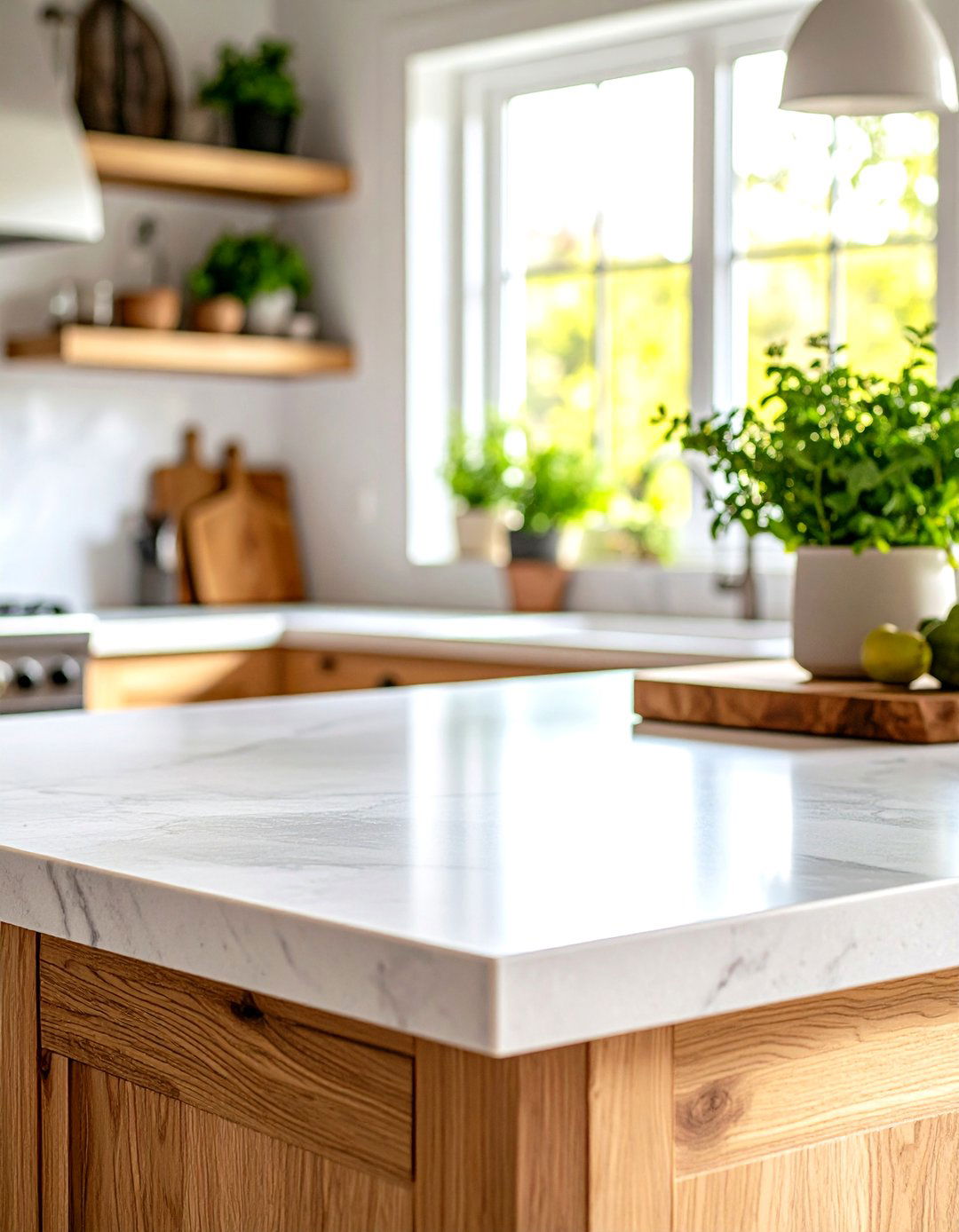
Soapstone is renowned for its heat resistance, tolerating direct contact with temperatures up to 450 °F (232 °C) without discoloration or damage, making it ideal for kitchen worktops and areas near cooktops. Its composition allows for a high specific heat capacity, enabling the stone to absorb and hold heat longer than many other countertop materials. Although relatively soft, soapstone is also abrasion-resistant; minor scratches can be sanded out on-site using fine-grit sandpaper, restoring a smooth surface. The stone’s ability to slowly release stored heat back into the environment can contribute to a warmer and more comfortable kitchen during cooler months. Overall, soapstone’s combination of heat resilience and manageable durability makes it a practical choice for active kitchen use.
8. Stain Resistance and Chemical Properties

Thanks to its non-porous, impermeable structure, soapstone naturally resists stains from liquids such as wine, coffee, and oils, even without sealing. Its inert chemical composition, containing primarily talc, dolomite, and chlorite, renders it unaffected by acids and alkalis commonly found in food and cleaning products. Unlike marble or limestone, which can etch under acidic spills, soapstone remains unchanged when exposed to vinegar, citrus, or tomato-based sauces. However, soapstone can develop superficial marks from strong alkaline cleaners or abrasive scrubbing pads, so gentle, stone-safe cleaning products are recommended. For stubborn spots, a light sanding followed by mineral oil application quickly restores an even, uniform surface.
9. Maintaining and Caring for Soapstone
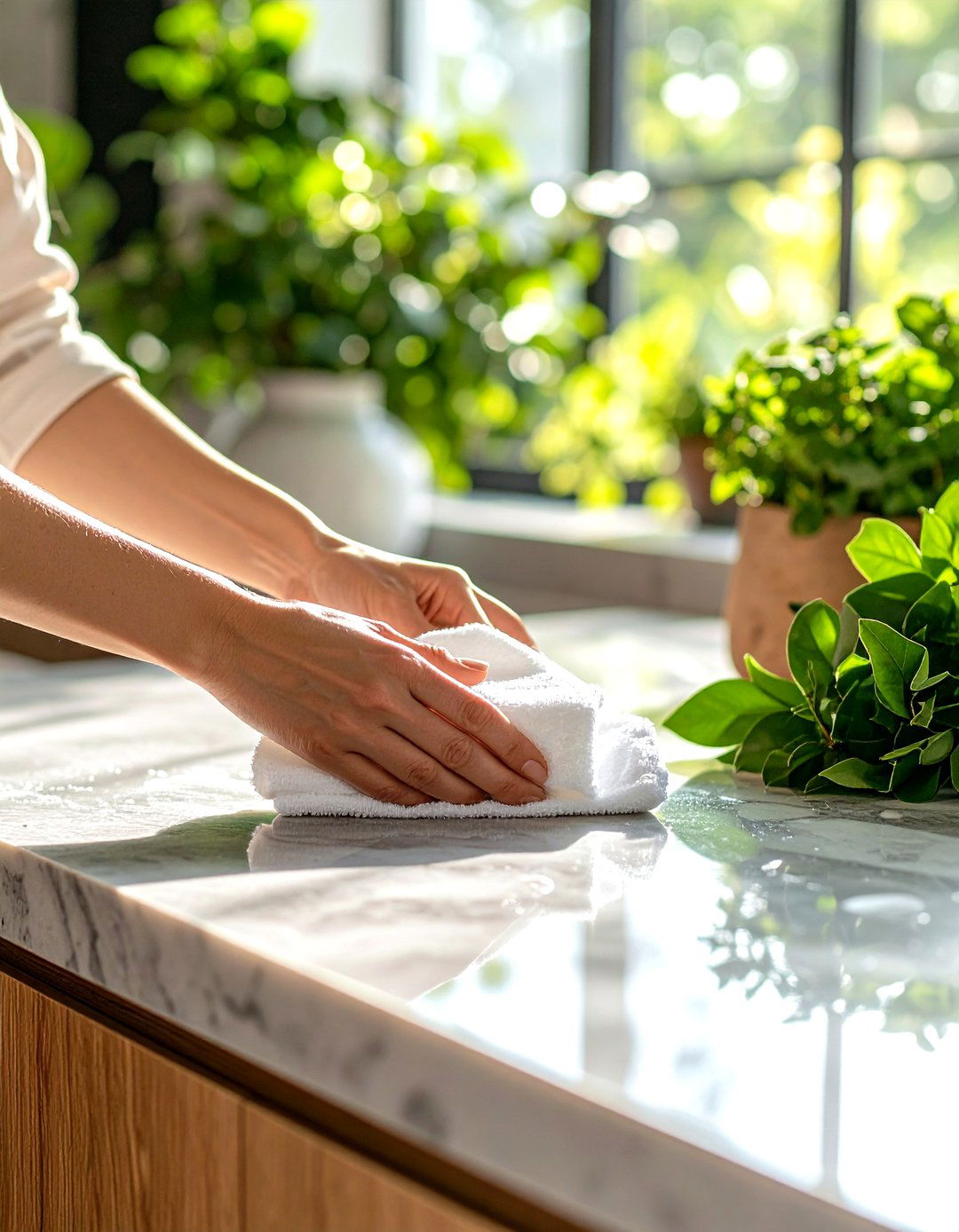
Routine maintenance for soapstone countertops requires only mild soap, warm water, and a soft cloth to remove everyday spills and debris. To enhance color depth and develop a uniform patina, many homeowners apply food-grade mineral oil periodically, especially during the first year of use. As the stone oxidizes naturally, mineral oil may be used less frequently, and some prefer to let the patina develop unaided for a more organic appearance. Scratches and minor chips blend into the patina over time, but stubborn blemishes can be sanded out with fine-grit sandpaper, then re-oiled to match surrounding areas. Avoid harsh acidic or abrasive cleaners to preserve the stone’s integrity and patina.
10. Sealing vs. Non-Sealing: Best Practices
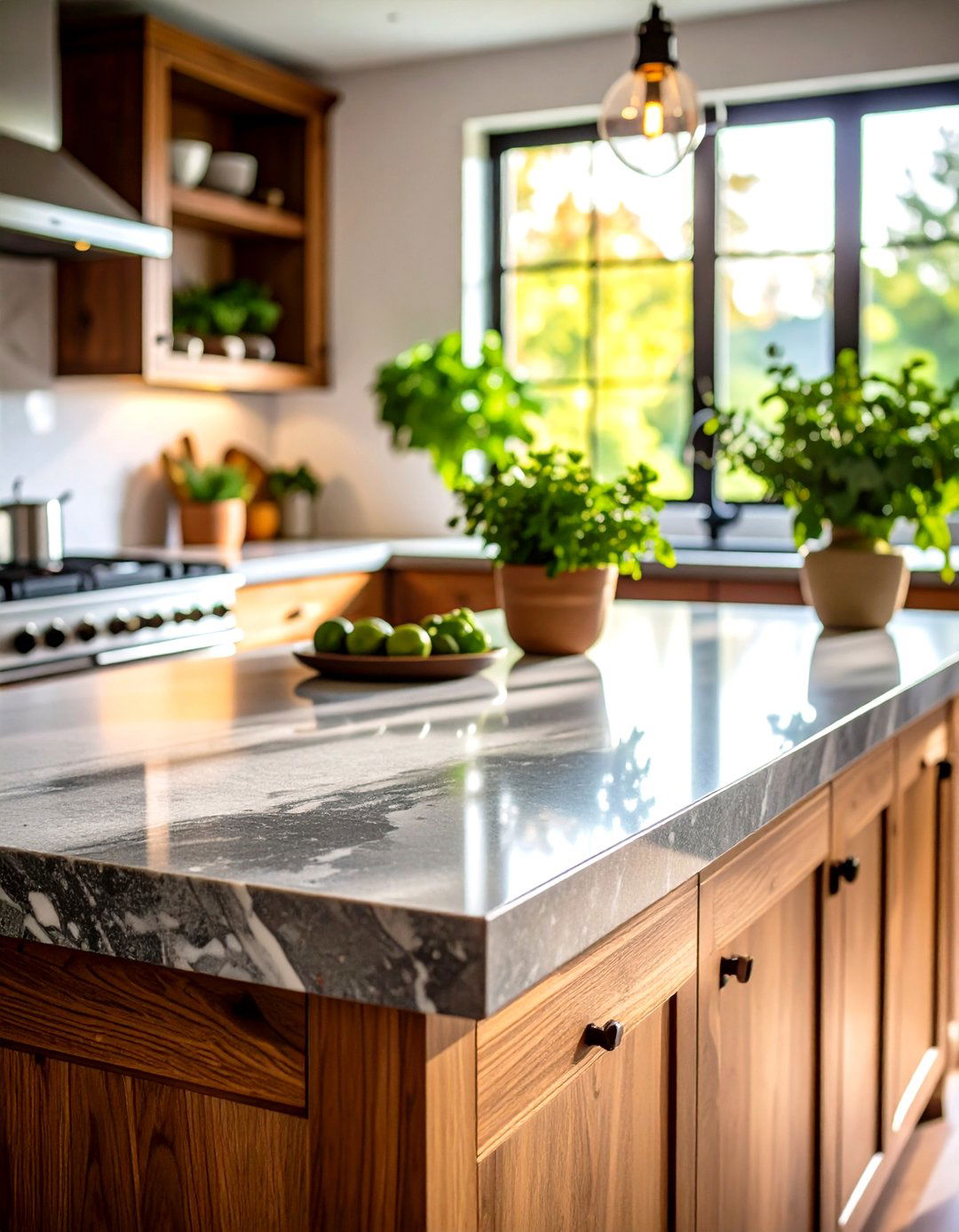
Unlike many natural stones, soapstone does not require sealing due to its non-porous nature, saving both time and expense over its lifetime. Some fabricators recommend a one-time seal with mineral oil or a specialized stone conditioner to achieve an even color before installation, but this is purely aesthetic and not functional. Homeowners seeking a darker, richer hue may choose to oil their soapstone monthly initially, then transition to seasonal applications as the patina stabilizes. If a glossy finish is preferred, a gentle buffing after oil application can impart slight sheen without compromising the stone’s natural matte character. Ultimately, personal preference dictates the extent of oiling and buffing, rather than any structural necessity.
11. Cleaning Techniques and Products

For everyday cleaning, a soft cloth or sponge with warm water and mild, pH-neutral soap is sufficient to maintain soapstone’s surface. Avoid acidic cleaners like vinegar or lemon juice, as well as abrasive scouring pads, which can dull the finish or damage the patina. Tougher spots can be addressed with a paste of baking soda and water applied gently with a non-scratch pad, then rinsed and dried thoroughly. For a deeper restoration, fine-grit sandpaper (220–400 grit) can be used to lightly sand the surface, followed by re-oiling to match the surrounding patina. Commercial soapstone cleaners and conditioners are available but are generally unnecessary if proper oiling and mild cleaning are practiced.
12. Installation and Fabrication Process
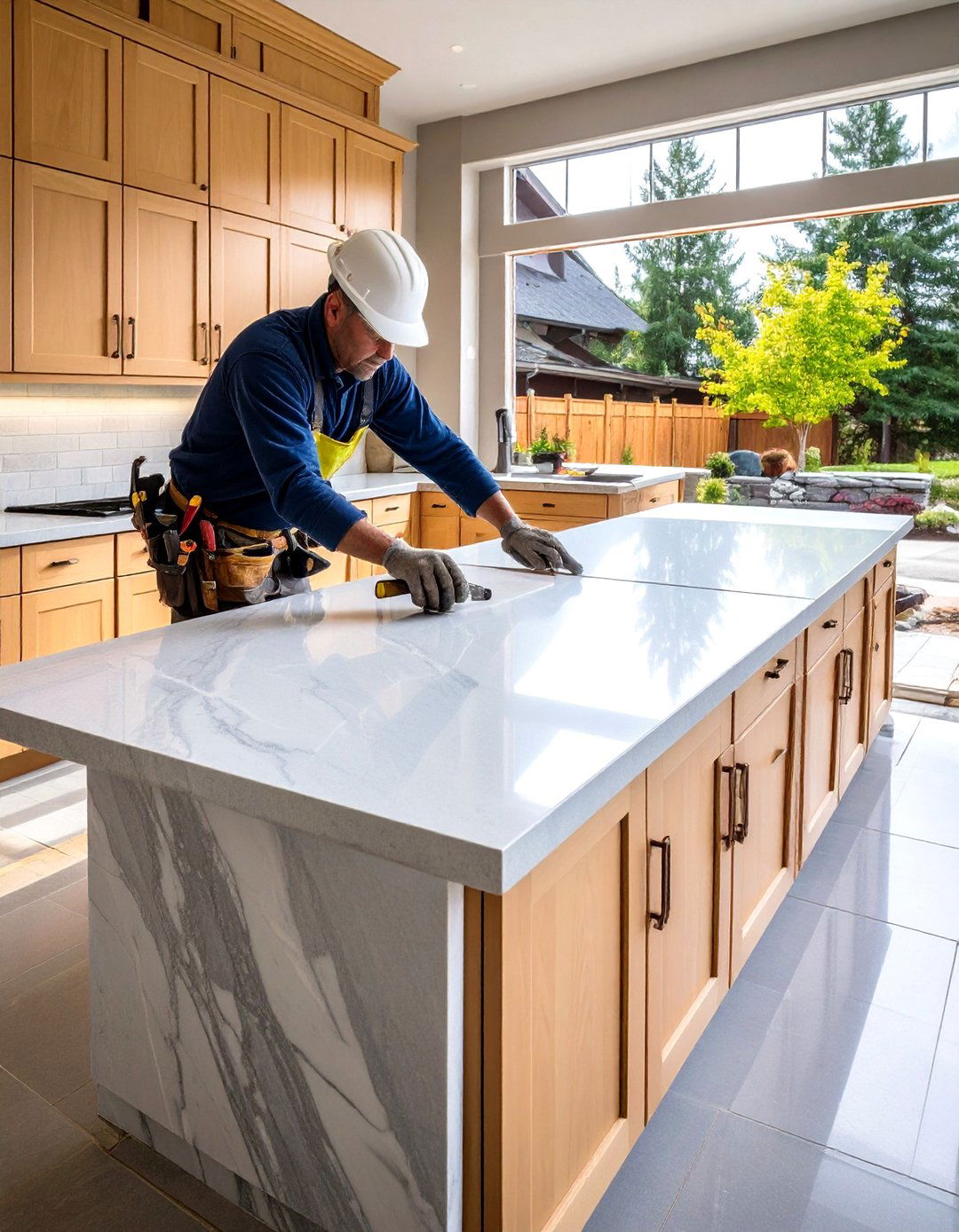
Professional installation is recommended for soapstone countertops due to the stone’s weight and the precision required during cutting and handling. Fabricators use diamond-tipped blades to cut slabs to size, then sand edges on-site to achieve seamless joints, as soapstone allows for nearly invisible seams when sanded flush. Undermount sinks and custom cutouts, such as for faucets and cooktops, must be planned precisely to prevent chipping during installation. Countertops are typically set on a sturdy substrate, with silicone adhesive securing edges, followed by gentle sanding of seams and final oiling for a uniform appearance. Proper support and leveling are critical to prevent stress fractures under heavy loads.
13. Custom Edge Profiles and Design Options
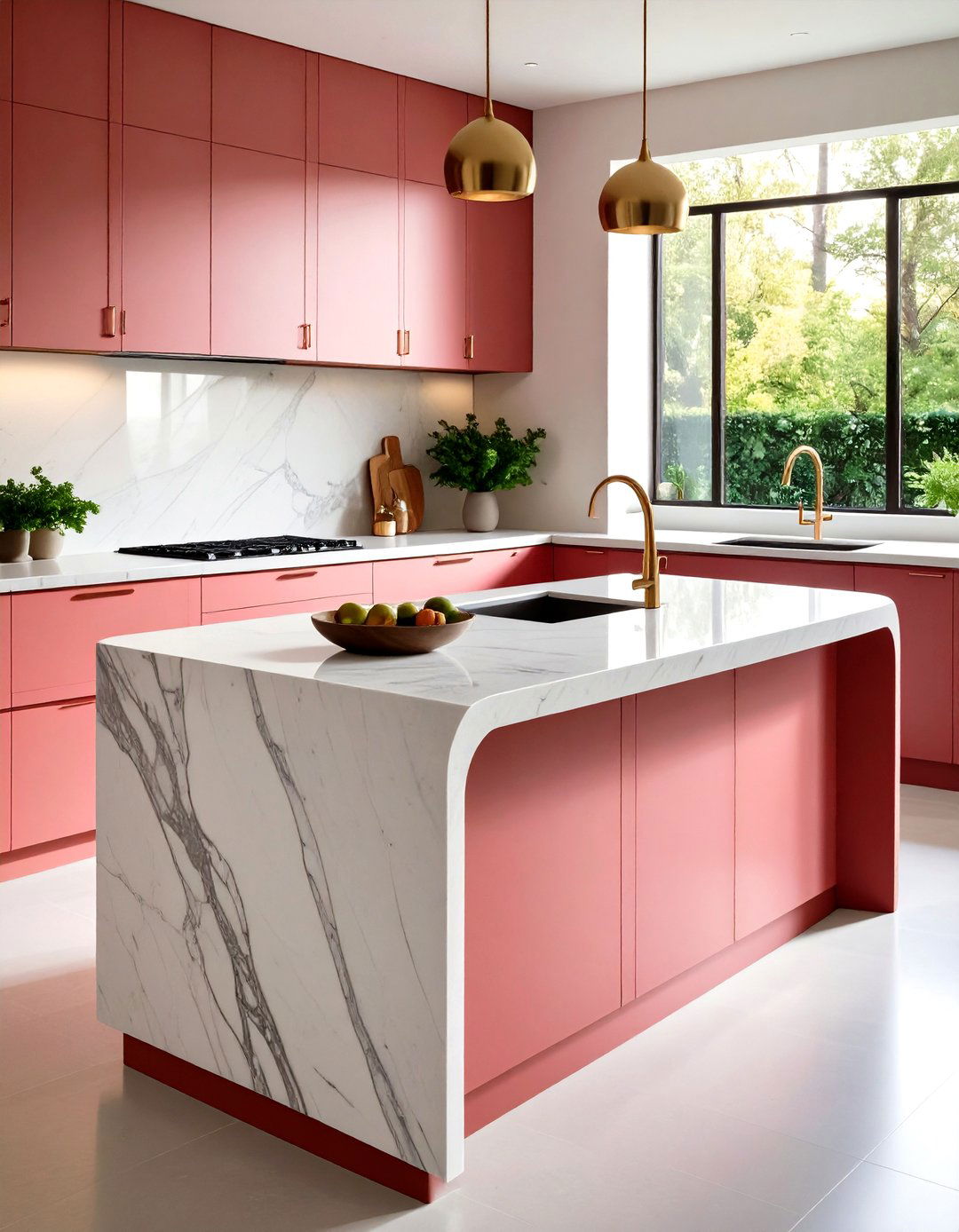
Edge profiling for soapstone countertops offers a range of aesthetic choices, from simple eased edges to elaborate ogee and waterfall treatments. Common profiles include bullnose, half bullnose, pencil round, bevel, chamfer, and ogee, each imparting a distinct look and affecting maintenance requirements. Softer, rounded edges like a pencil or bullnose reduce the risk of chipping, while sharper profiles such as ogee add classic elegance but may require more careful cleaning. Waterfall edges, where the countertop material continues vertically down the side of an island, showcase soapstone’s thickness and dramatic veining. Homeowners can mix edge styles within a single project—such as a waterfall island with eased perimeter edges—to achieve personalized designs.
14. Seam Placement and Joint Treatments
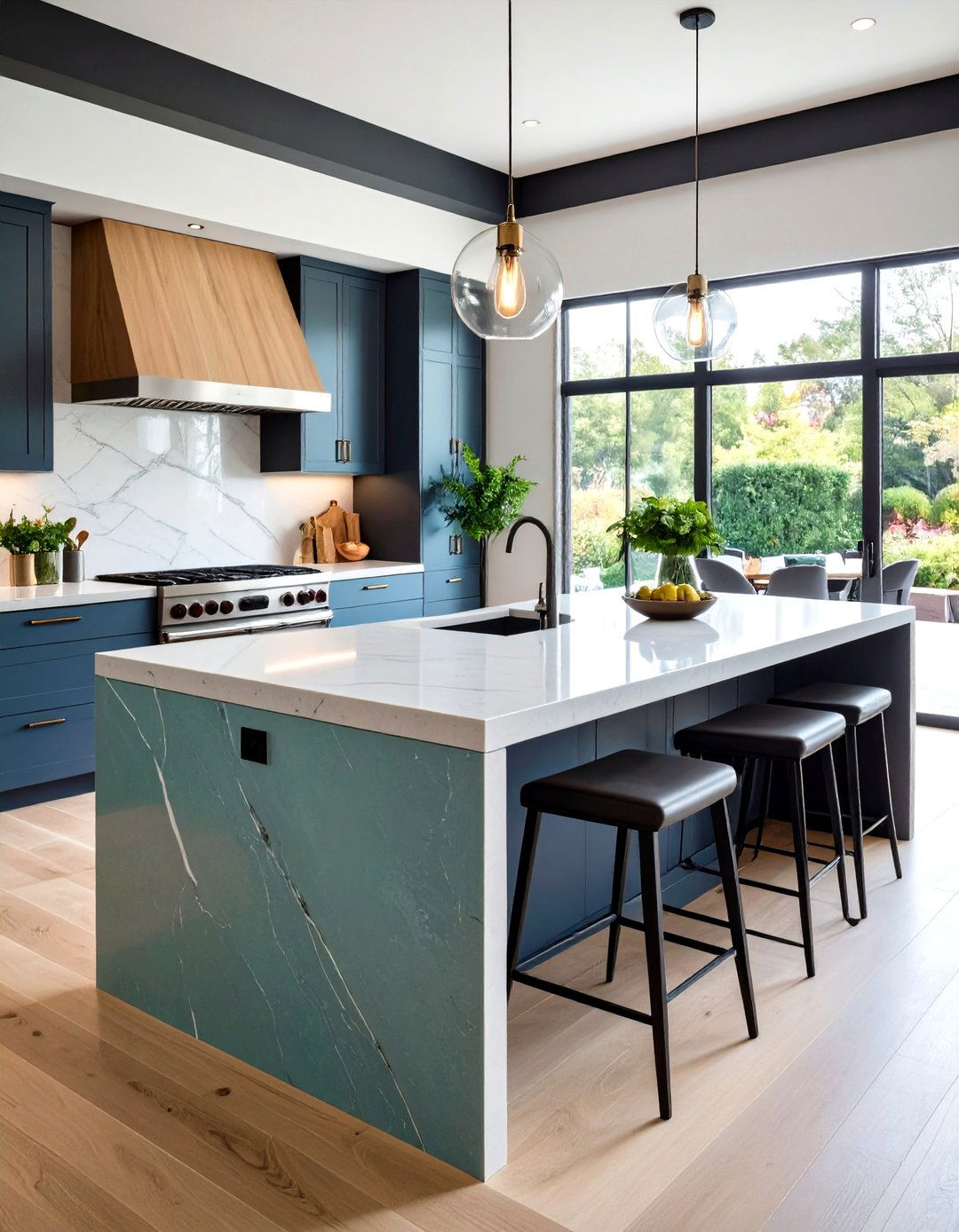
Soapstone seams are nearly imperceptible when executed properly, as installers use black epoxy fillers that match the stone’s hue, then sand seams flush with adjoining slabs. Strategic seam placement—often behind sinks or along island backs—minimizes visibility in high-profile areas. On large countertops or islands requiring multiple slabs, tight tolerances and on-site sanding ensure that seams appear continuous, maintaining the honed finish across the surface. Unlike polished stones, soapstone’s honed texture conceals minor color mismatches, making seams blend seamlessly into the natural grain. Proper seam treatment also prevents moisture infiltration and supports structural integrity over time.
15. Integrated Soapstone Accessories (Cutting Boards, Sinks)
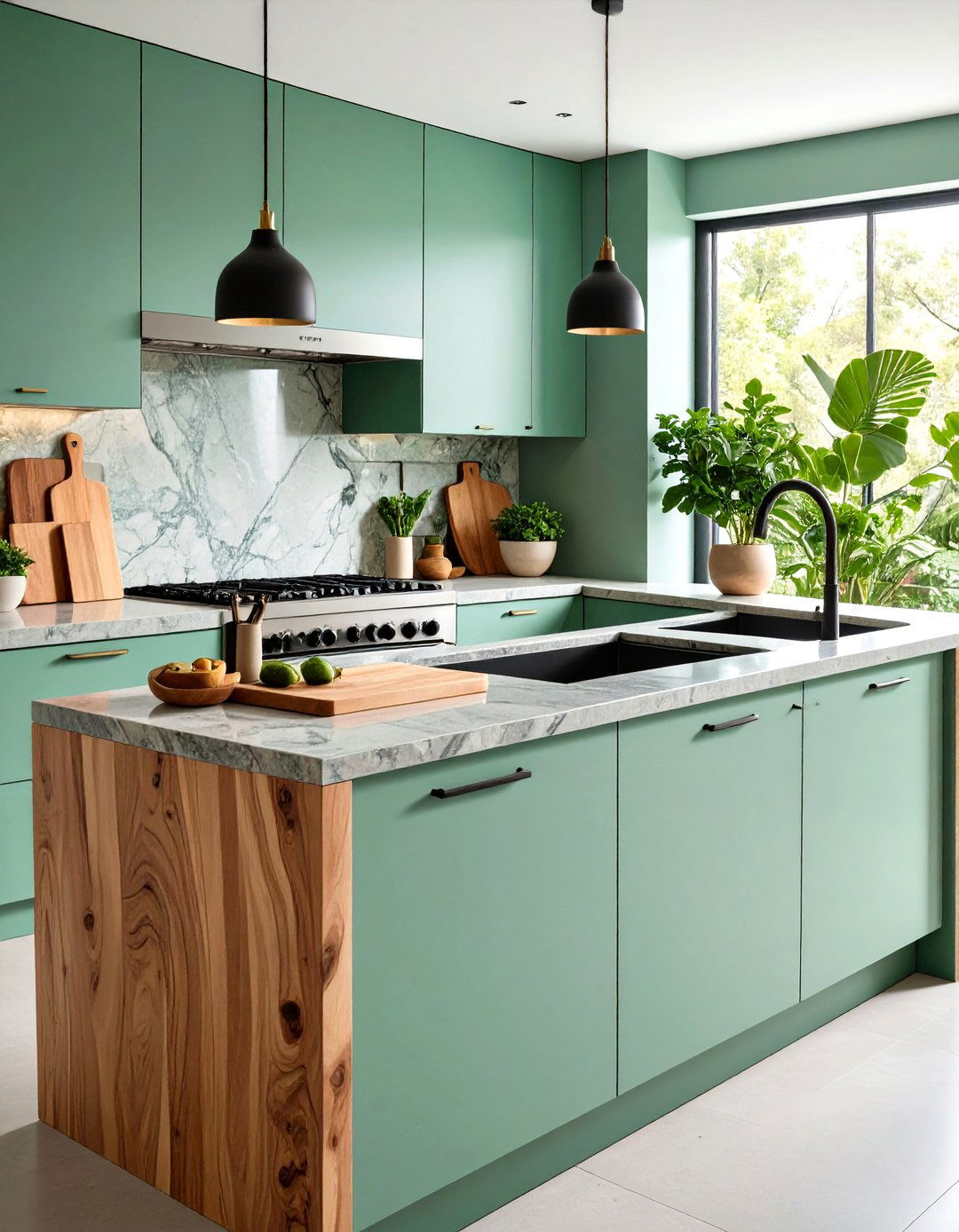
Soapstone countertops can incorporate integrated accessories such as matching soapstone sinks, drainboards, and cutting board inserts for a cohesive look. Integrated cutting boards may feature wood inlays that complement surrounding cabinetry while providing a dedicated prep area that tucks neatly into the stone surface. Soapstone sinks, carved from the same slab, offer a seamless transition between countertop and basin, enhancing durability and ease of cleaning. Some designs include sloped drainboards for efficient water runoff, blending function and aesthetics. These custom features require precise fabrication but elevate kitchen workflows and visual coherence.
16. Backsplash Designs and Complementary Materials
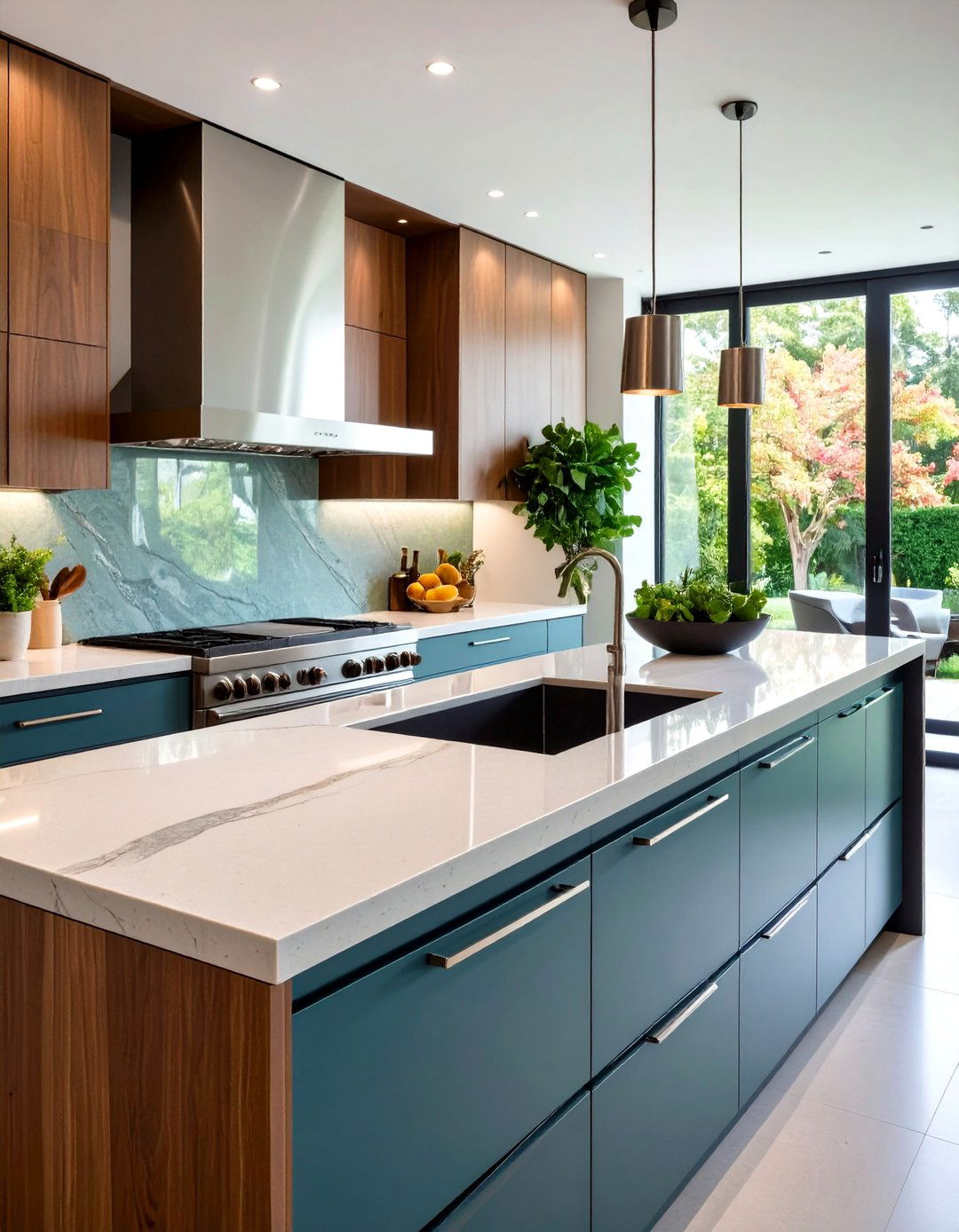
Full-height soapstone backsplashes create a unified, contemporary look by extending the countertop up the wall, protecting against splashes while showcasing the stone’s veining. Alternatively, pair soapstone countertops with contrasting materials—such as white subway tile, reclaimed wood, or marble slab—to introduce texture and brightness. Soapstone tile backsplashes offer a modular approach, allowing for patterns like herringbone or stacked joints for added visual interest. Lightweight metal trim or stainless steel accents can frame soapstone backsplashes in commercial-style kitchens, emphasizing durability and industrial flair. Designers often coordinate grout color to either match the stone for a seamless look or contrast boldly for graphic appeal.
17. Soapstone Kitchen Island Design Ideas
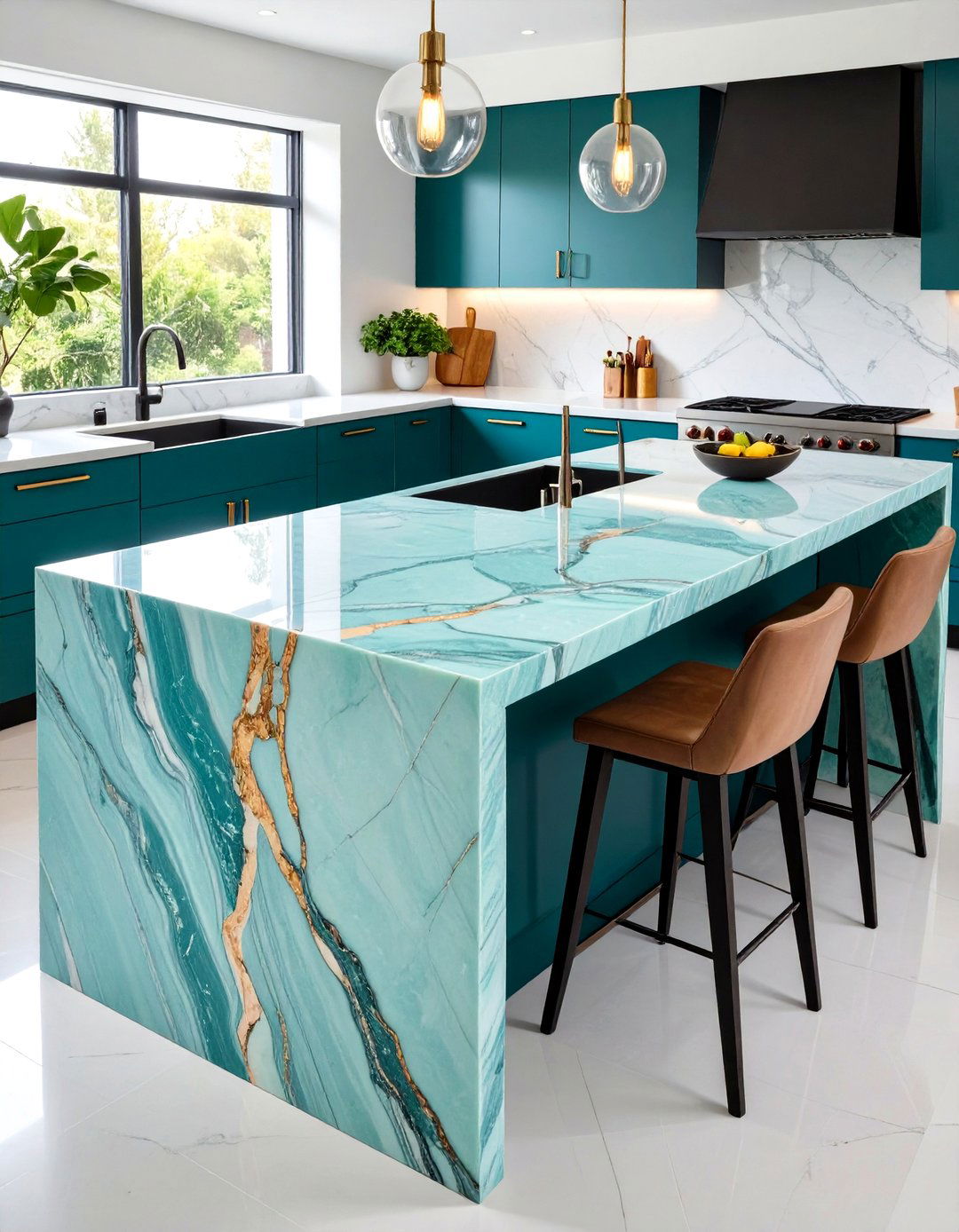
Soapstone islands serve as focal points, offering ample workspace and seating areas with the stone’s dramatic veining and thickness on display. Incorporate waterfall edges to showcase full slab thickness and create sculptural silhouettes that flow from horizontal to vertical planes. Combine soapstone with warm wood cabinetry or open shelving for a balanced, Scandinavian-inspired aesthetic. For a multi-functional island, integrate prep sinks, cooktops, or appliance garages beneath soapstone surfaces for streamlined workflows. Under-counter lighting or toe-kick LEDs accentuate soapstone’s texture and shadow lines, enhancing ambiance in open-plan layouts.
18. Cost Analysis and Budgeting
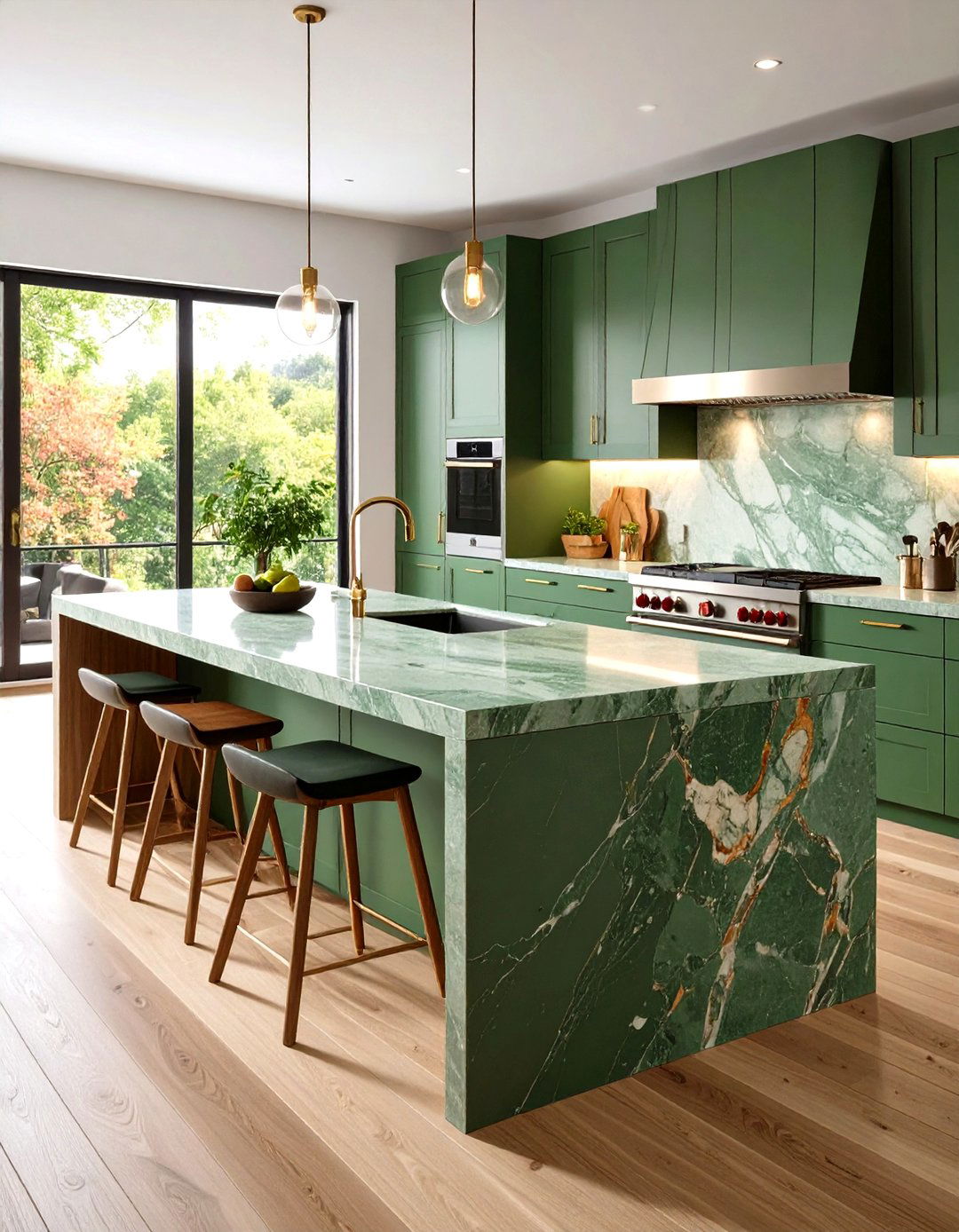
Soapstone countertops typically range from $55 to $120 per square foot for material alone, with installation adding $30 to $70 per square foot depending on complexity and edge profiles. Factors influencing cost include slab thickness (commonly ¾″ or 1¼″), color rarity, and extra features like integrated sinks or drainboards. Fabrication expenses may rise when tight seams, custom cutouts, or waterfall edges are involved, requiring skilled labor and specialized equipment. Budget 5–10% additional for overage to accommodate seams, waste, and potential installation adjustments. While initial investment can exceed that of laminate or some engineered stones, soapstone’s longevity and low maintenance often deliver a favorable lifecycle cost.
19. Comparing Soapstone with Other Materials
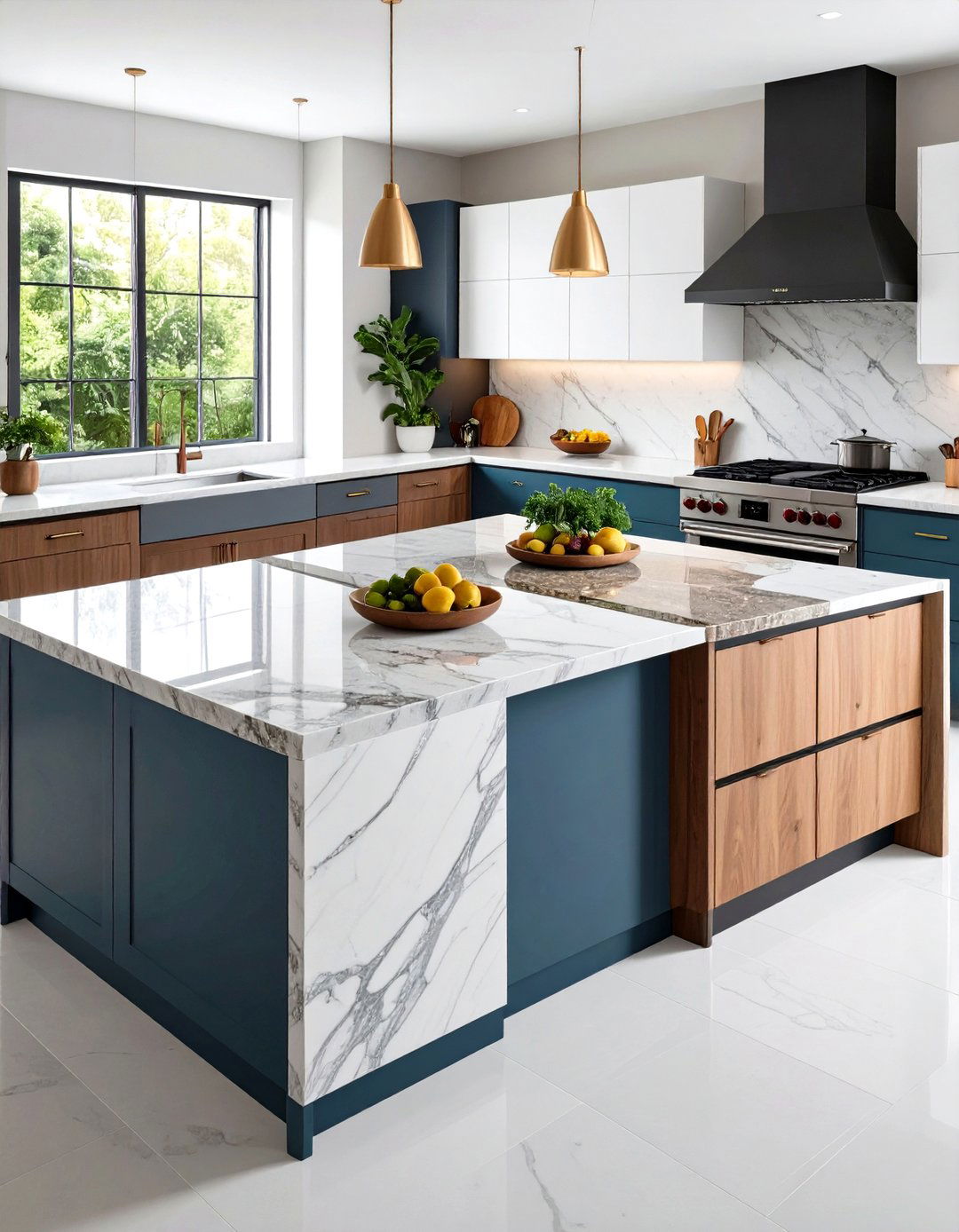
Unlike granite, marble, and quartz, soapstone does not require sealing and is inherently resistant to acids, heat, and bacteria, making it a low-maintenance choice. Granite offers a harder surface less prone to scratching but demands periodic sealing and may react to acidic spills. Quartz provides vast color options and uniformity but can discolor under UV light and is less heat tolerant. Marble delivers elegant veining but is porous and vulnerable to etching and staining. Soapstone’s softer nature yields a warmer, more tactile feel, and its living patina creates an evolving surface that many homeowners cherish.
20. Eco-Friendly and Sustainable Benefits
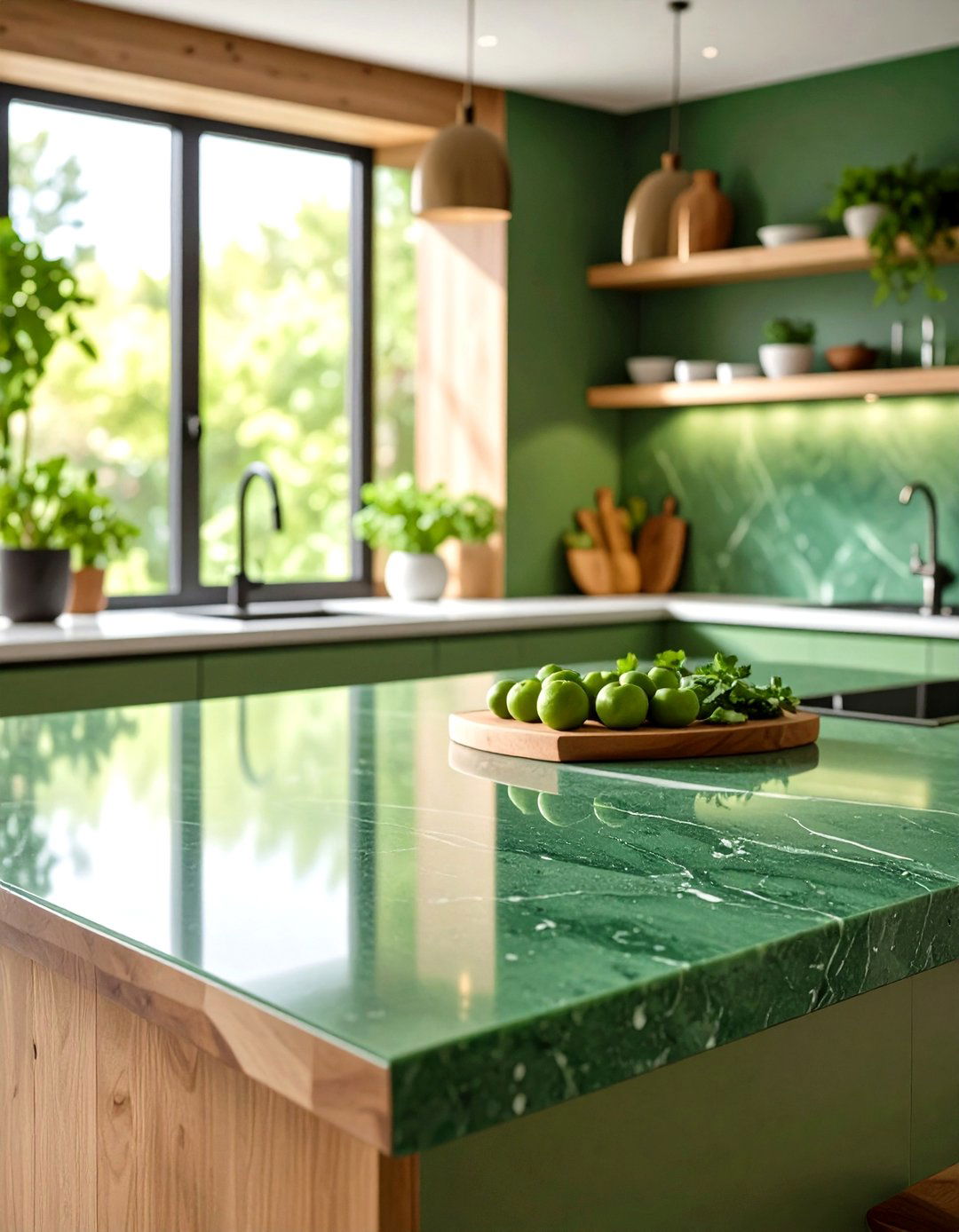
Soapstone is an environmentally friendly countertop choice because it is quarried naturally with minimal processing and contains no synthetic resins or additives. Many soapstone suppliers practice responsible quarrying and can recycle waste fragments into tiles, pavers, and smaller accessories, reducing landfill impact. The stone’s exceptional longevity and resistance to wear decrease the need for frequent replacements, lowering long-term material consumption and waste. Its inert chemical makeup ensures no off-gassing or volatile emissions, contributing to healthier indoor air quality. For eco-conscious homeowners, soapstone aligns with sustainable design goals through durability, recyclability, and minimal environmental footprint.
Conclusion:
Soapstone kitchen countertops blend timeless beauty with exceptional functionality, offering a non-porous, heat-resistant surface that matures gracefully into a unique patina. From its ancient roots in cookware and laboratory benches to modern island designs featuring waterfall edges and integrated accessories, soapstone adapts to both rustic and contemporary aesthetics. While its softness invites scratches and chips, these marks can be easily restored, transforming wear into character. Soapstone’s minimal maintenance requirements, absence of sealing, and eco-friendly attributes make it a compelling choice for sustainable kitchen design. By weighing factors like cost, color options, and care routines, homeowners can embrace soapstone as a durable, hygienic, and stylish countertop solution that evolves with their lifestyle.


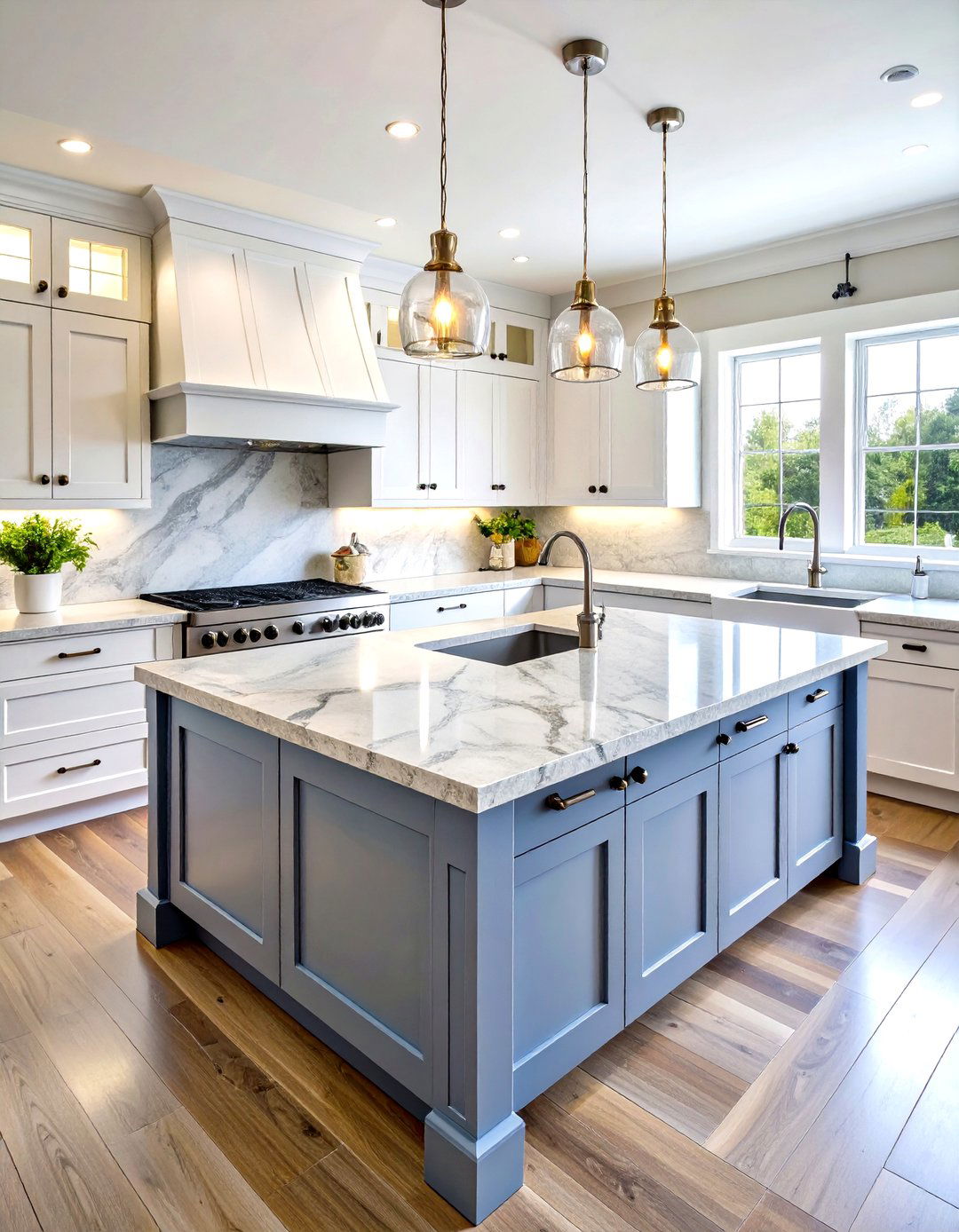
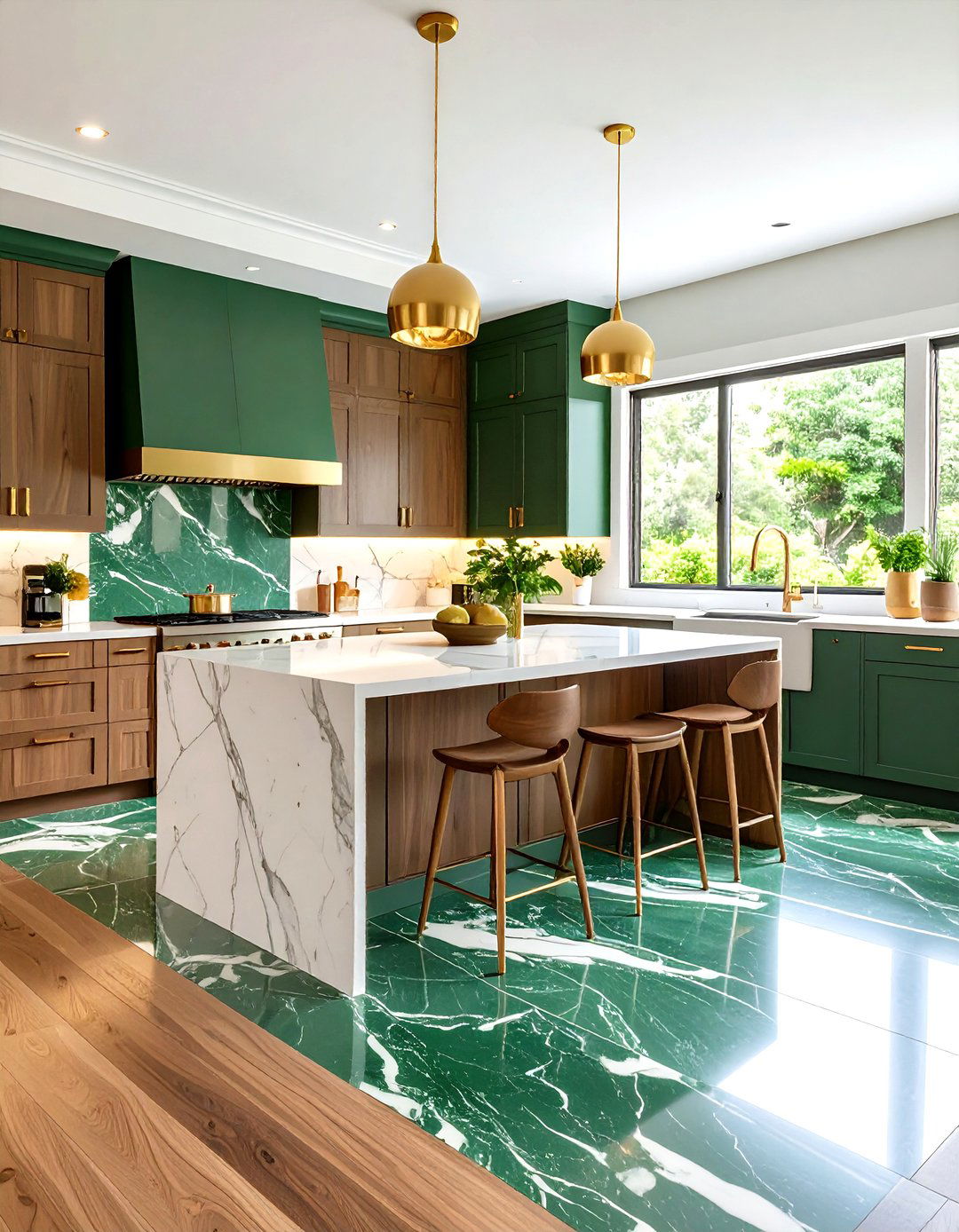
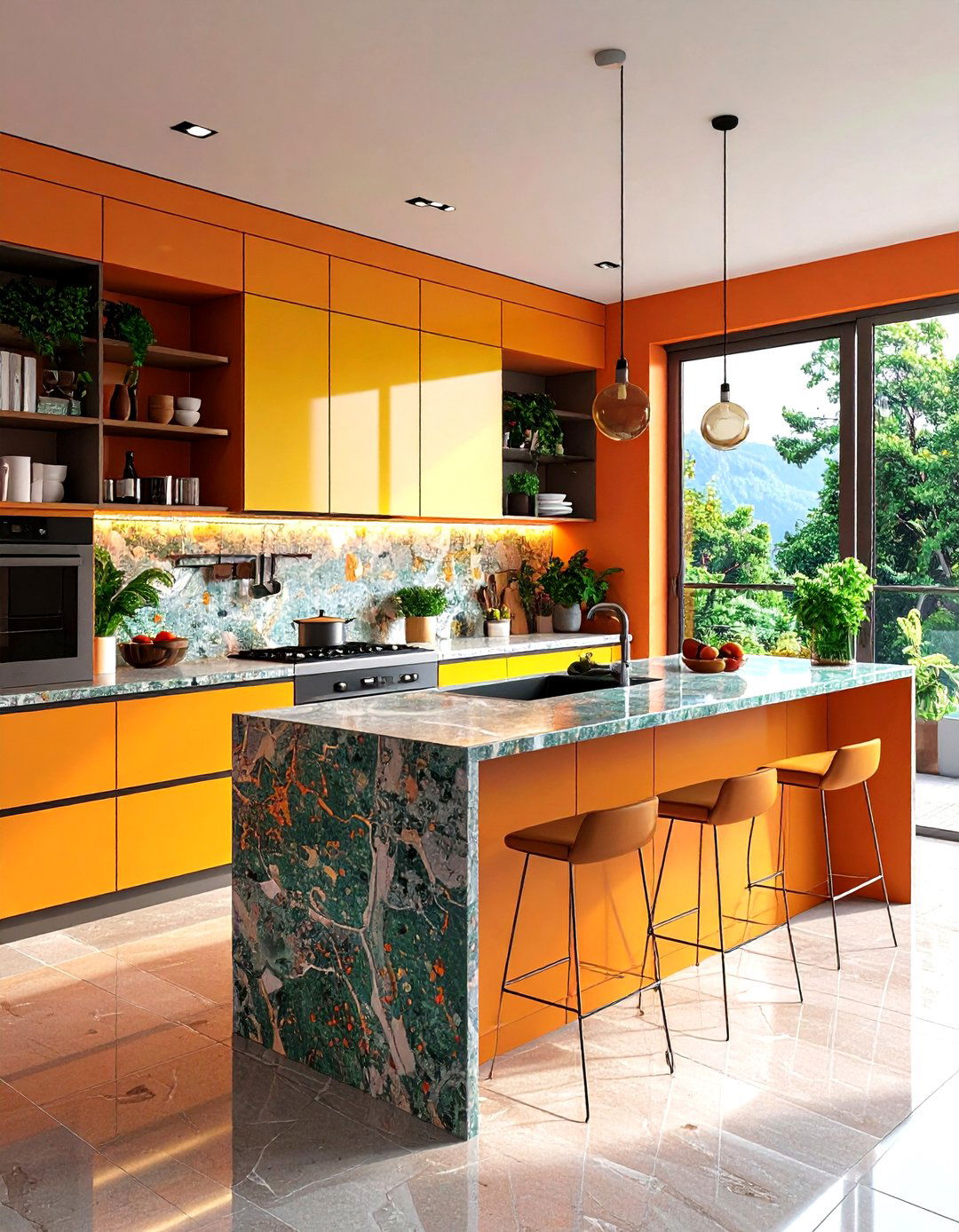
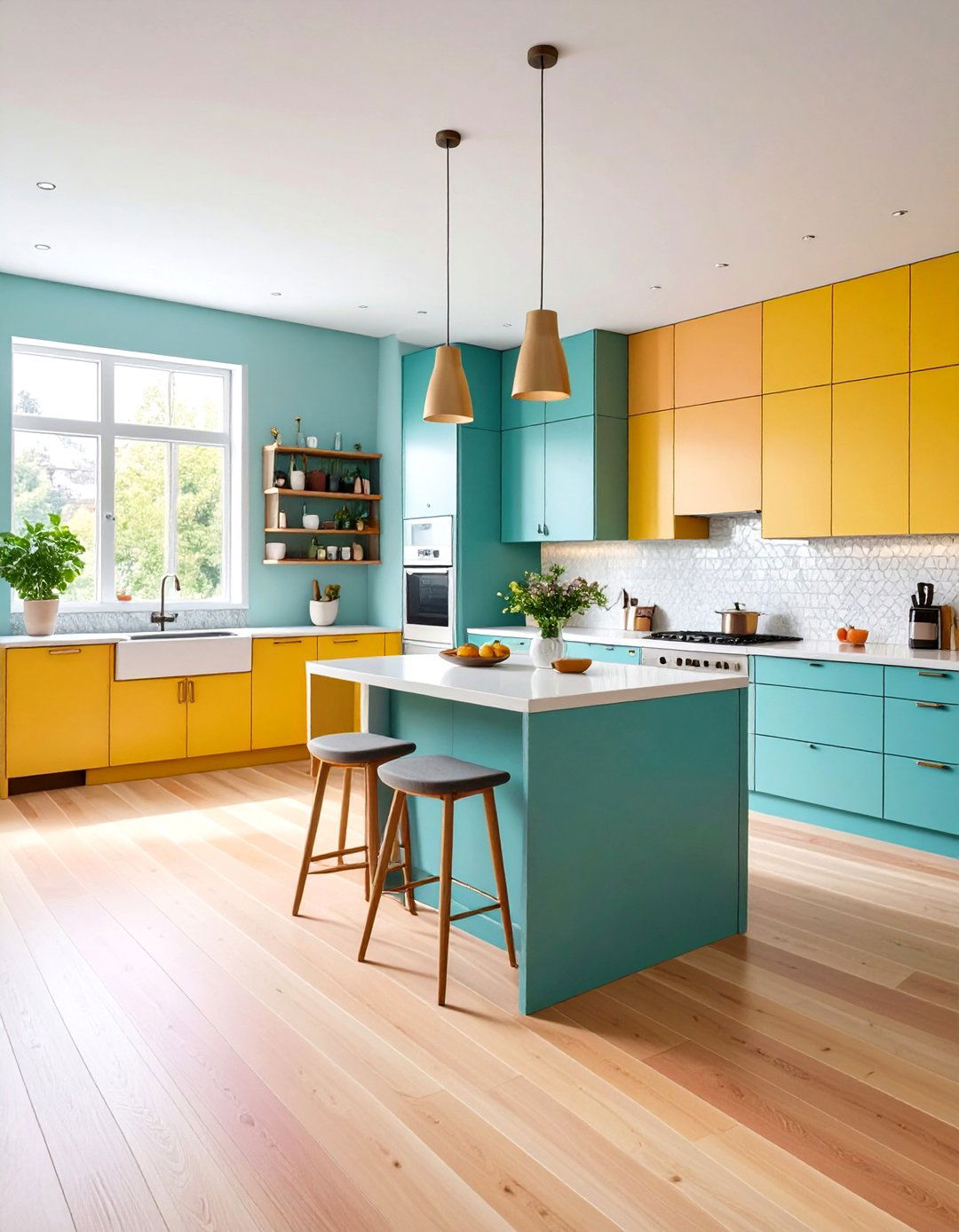


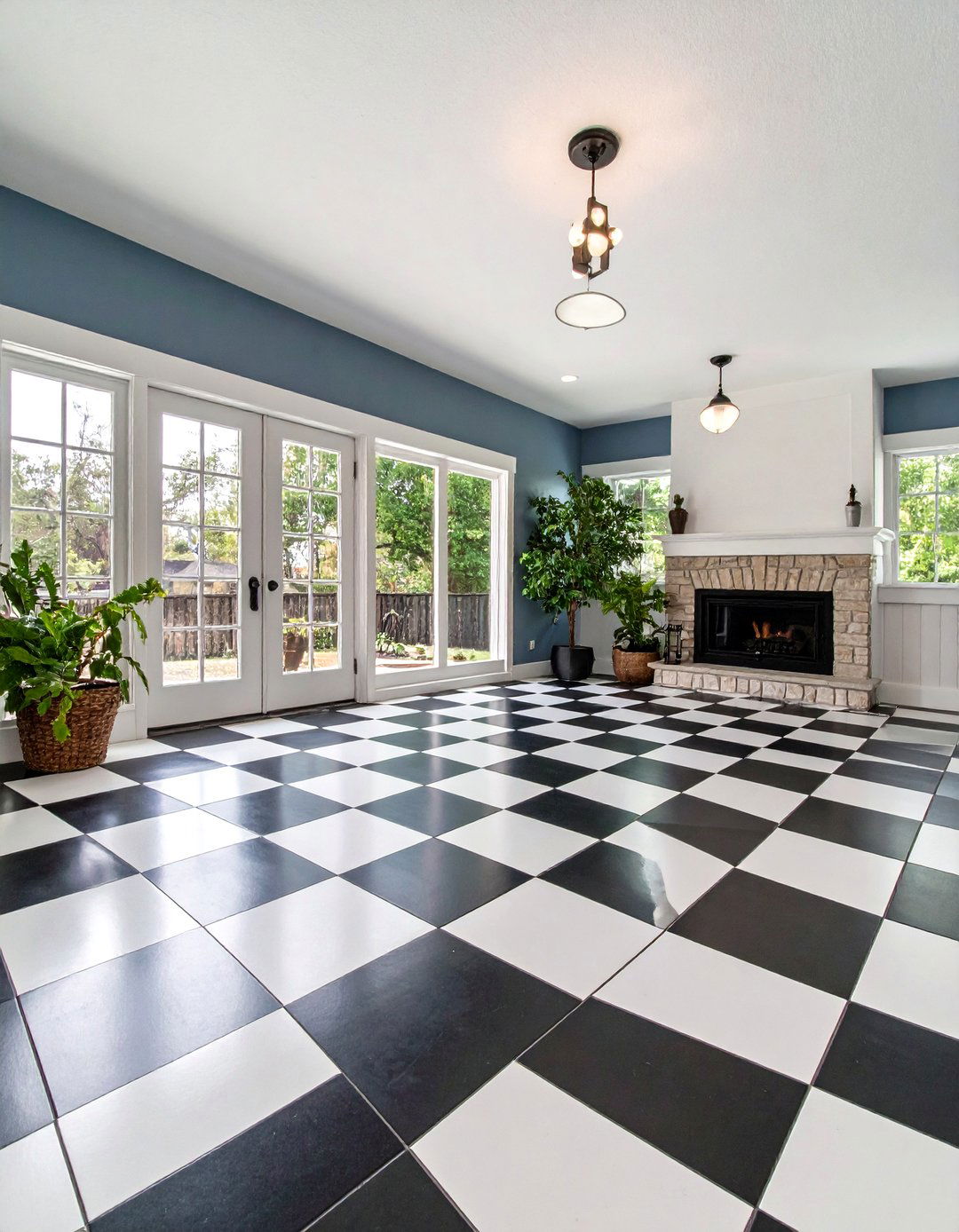
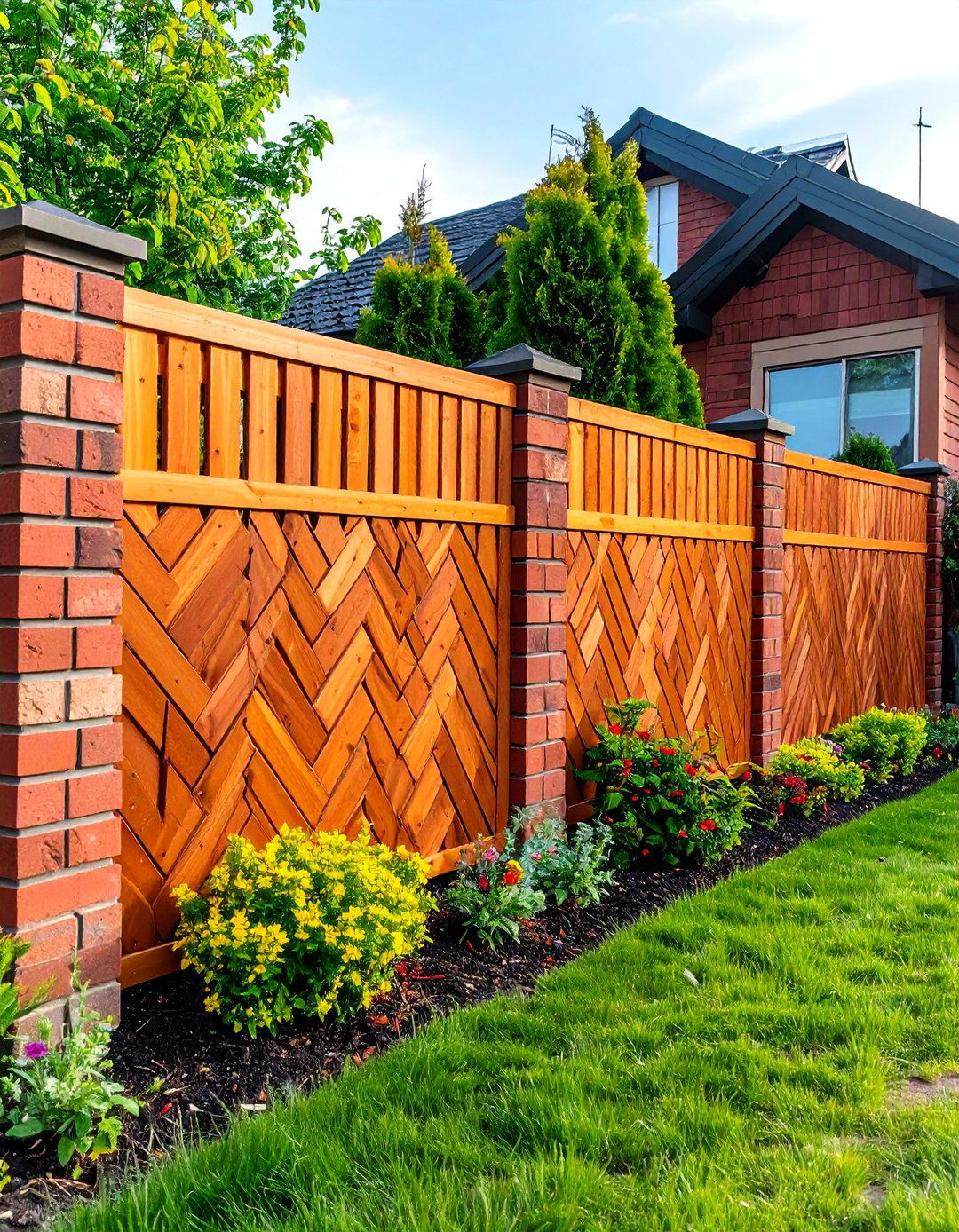
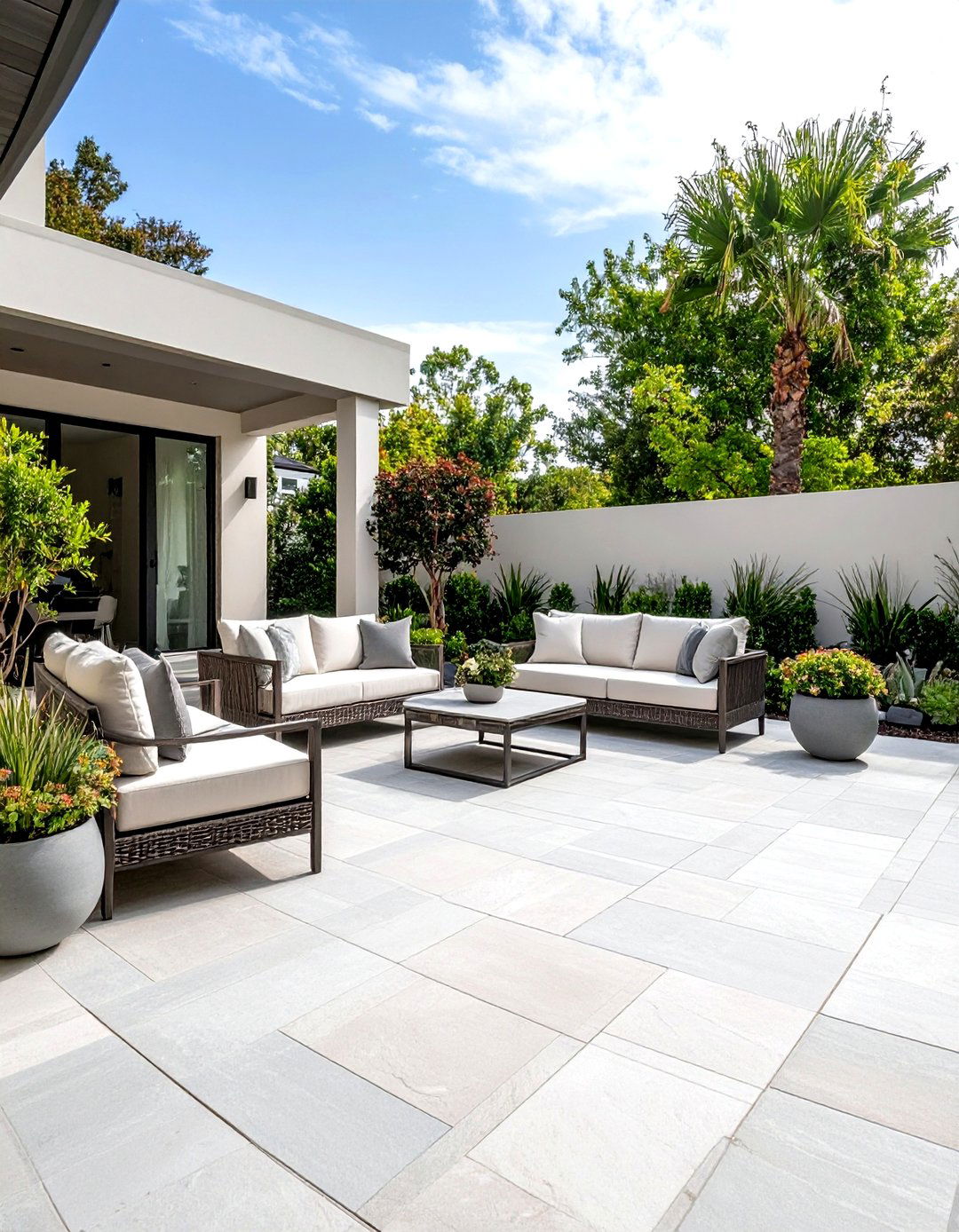
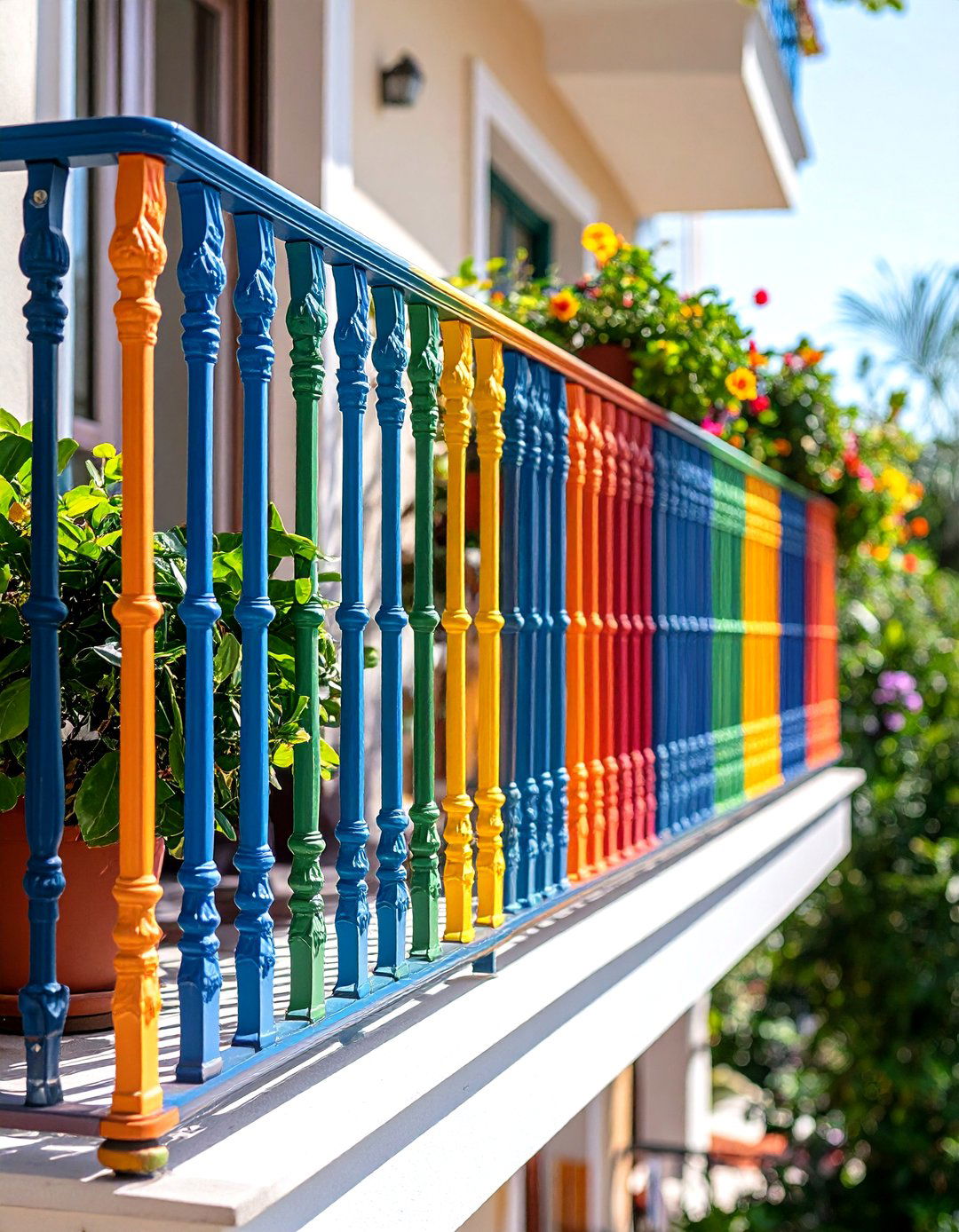
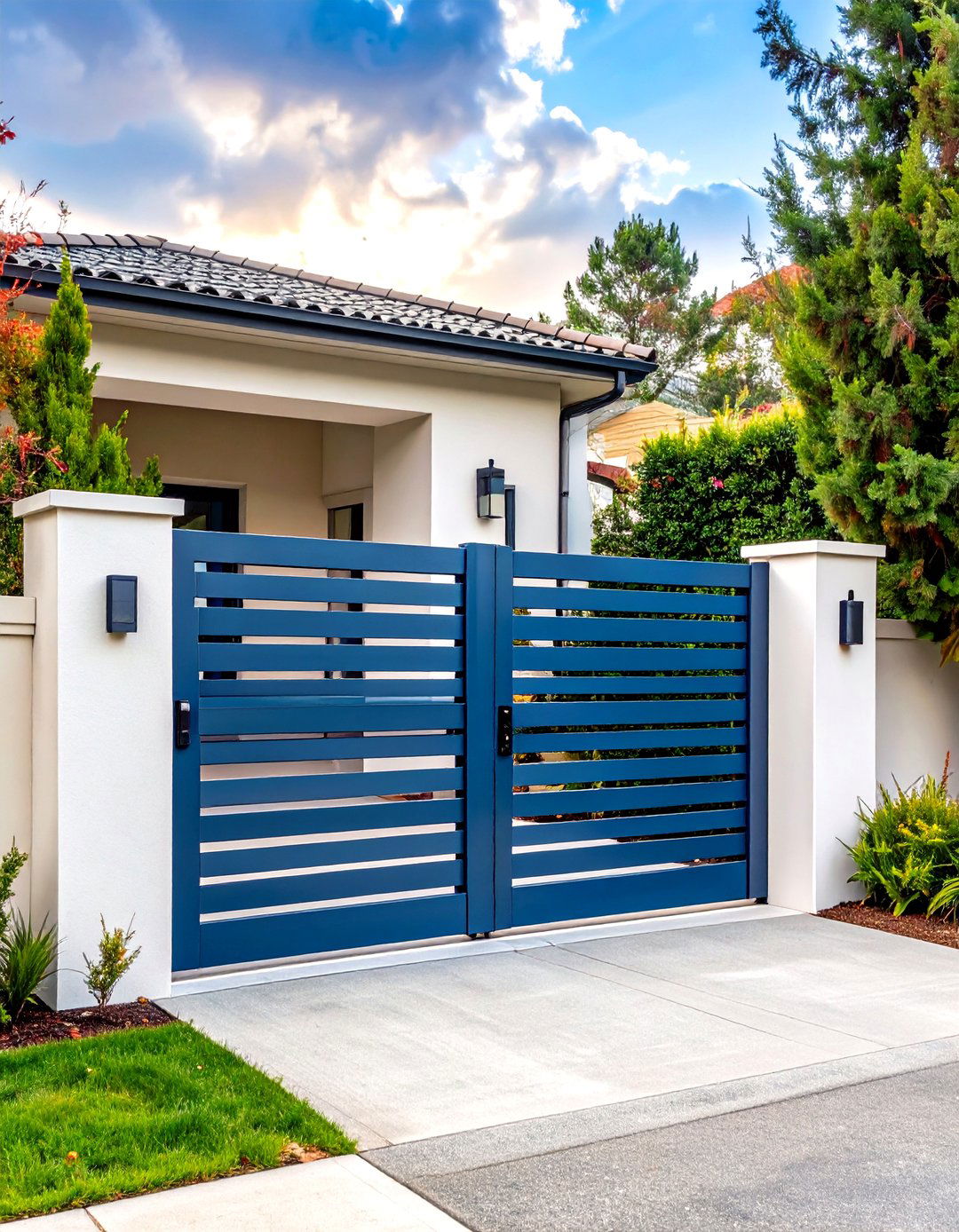
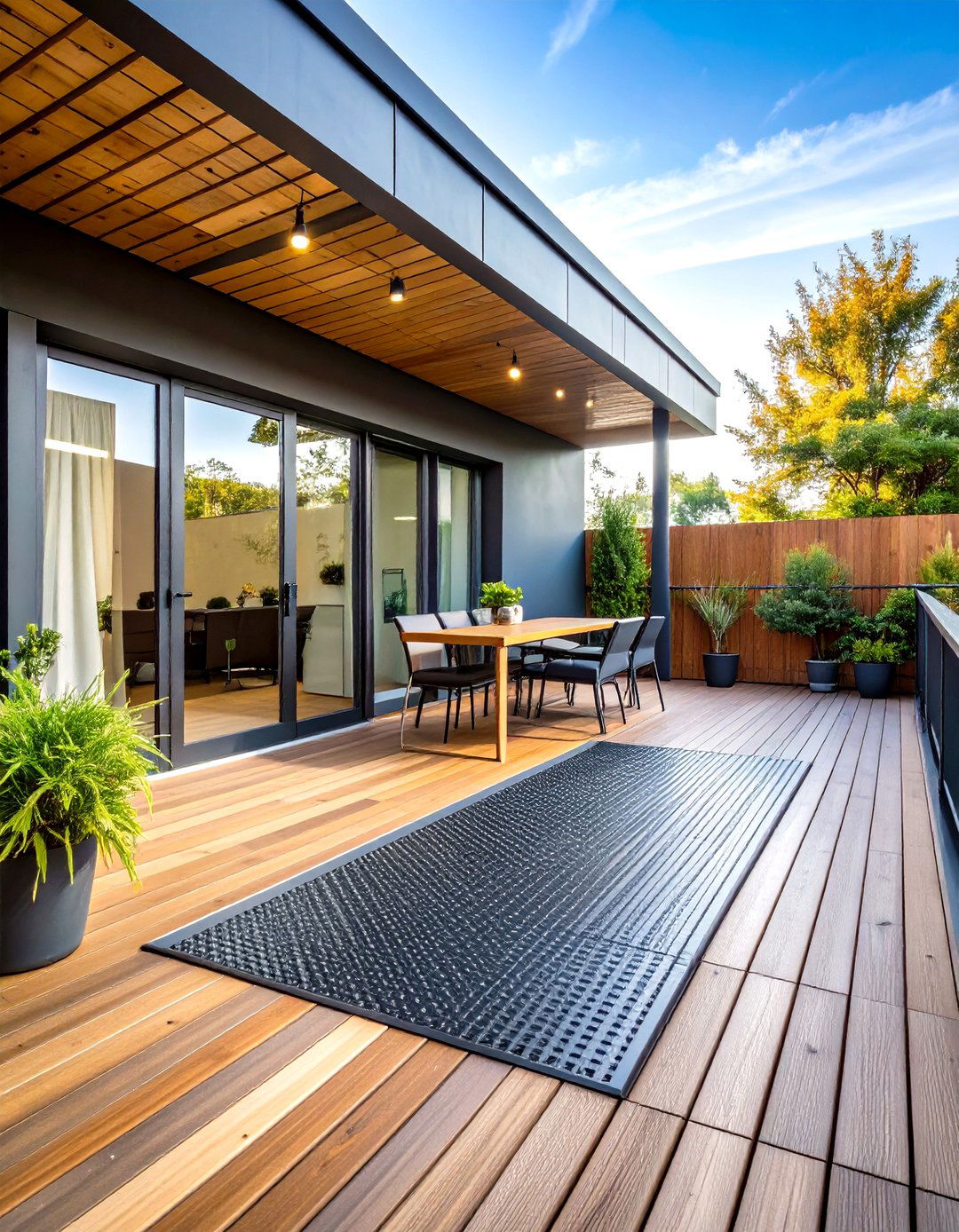
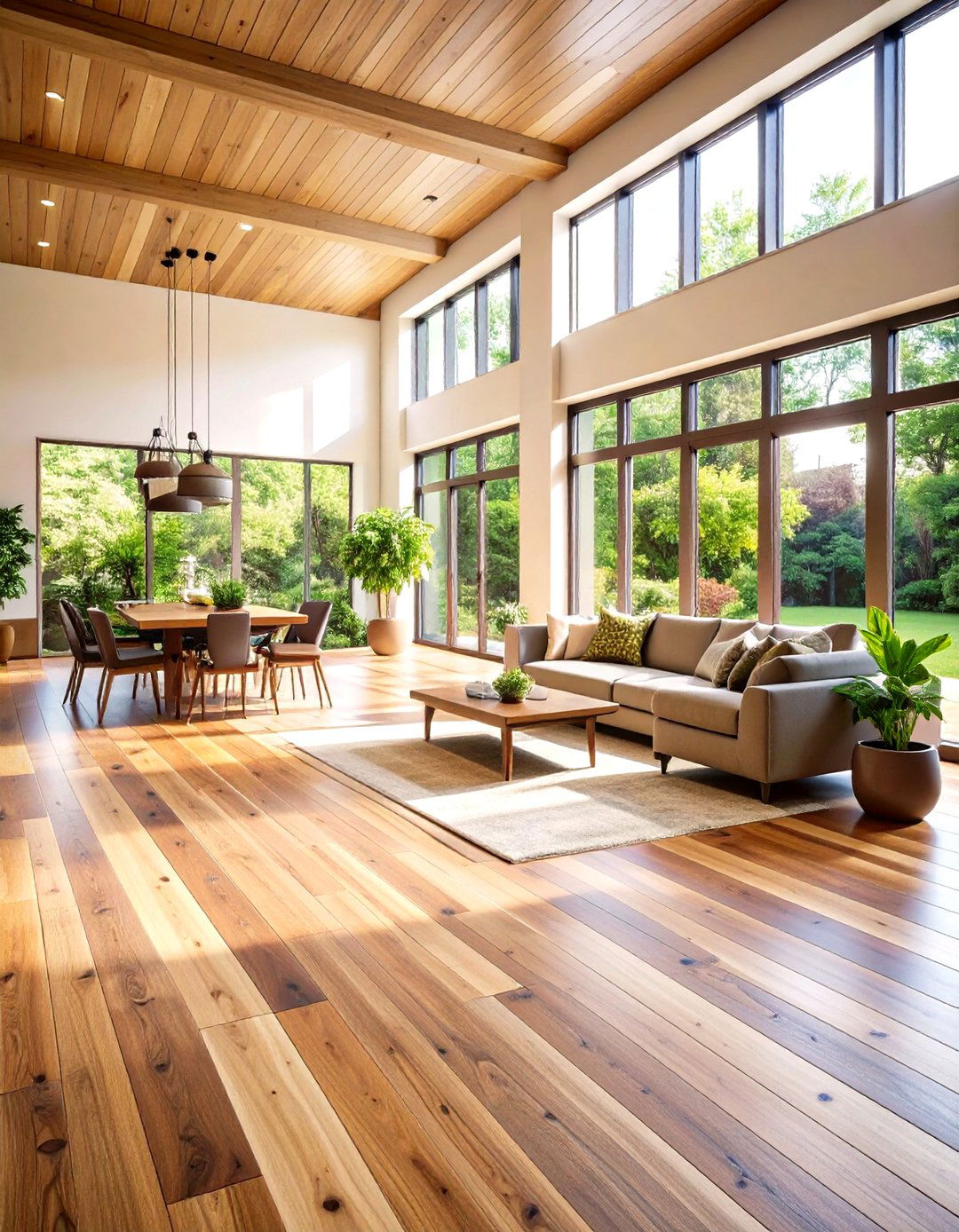
Leave a Reply